Premature evacuation, part twenty.
DAY SEVENTY-NINE
Wednesday, November 14th
Our first day in Los Angeles, excitedly for up and began rushing around as much as we could. We knew the time difference and the arbitrary daylight savings bullshit would affect how long our days were, and that traffic in Los Angeles, whether we set the GPS to avoid highways or not, would ensure everything was at least a half hour away from each other no matter how geographically close they actually were. First, we had to get gas, and found the cheapest station we could in a city where it varied between no cheaper than $3.50 and as expensive as $4.50. Thankfully, we had that $37 and then some left over from that nice Jesus couple from the last gas station.
Our first stop was a half-mile long mural locally known as "The Great Wall", though actually titled more simply, "The History of California". Designed by Judith Baca, it was her first mural, and over 400 youths and artists, some of whom were from a justice juvenile program, helped finish it over the course of six summers starting in 1978. It spanned six city blocks at 2,754 feet by the Valley College campus, on the walls of the Tajunga Wash drainage route, and was one of the longest murals in the world. When we got there, we found street parking and began at its ending, leaving us to walk along it and watch history in rewind. The drainage route was mostly dry, with trash like a mattress and a shopping cart sitting in it. The mural, thanks to upkeep, was pristine. As with other murals we'd visited, it presented a brutally honest portrayal of how most states in America began, through the eyes of the people destroyed in California's path, deliberately focusing on the marginalized people whose backs it was built on. It started with pre-history and dinosaurs, entered the lives of indigenous people, their folklore, and their eradication by colonialism, jumping into the 20th century and its wars, bigotry, and civil rights fights that took place throughout, before the introduction of the suburbs and World War II, and ending in the 1950s with McCarthyism. There was no way to speak of history honestly or accurately without acknowledging how much destruction, hatred, and dead bodies it was all built on. And ya know what? When all was said and done, none of it was worth founding this country, period. It was an impressive logistical feat in its own right, but the mural's unflinching attention to historical detail and creative way of depicting suffering through literal and metaphorical scenes was incredibly scathing and beautiful. We both loved it.
Afterwards, we sought out to do the three-mile hike up to the Hollywood letters and back. At first, we had trouble figuring out how the fuck to get to the trailhead. Google Maps took us to a dead-end road where a gate advertised paid horseback tours up to it. After some digging, we found out about the three public trails we could choose from. We decided on the one rated "G", but were just as confused when we got to it. The drive was up the most narrow and winding roads we'd ever seen anywhere, taking sharp turn after sharp turn by extravagant houses surrounded by angry No Parking signs. A security vehicle was sitting right where the trailhead was supposed to be, and he told us we could just walk right through the door, even though it had a keycode thing on the handle. He said parking was down the road. It was all simpler than it looked. The sun shone blindingly and beat down hard whenever we weren't protected by the shade of the cliff faces towering over us. It was a nice stroll, more level than not, and the steady incline was manageable, though I'd definitely say it became more of a "PG" rating after a while. As we got higher up, we were provided several incredible views of the city. When we got to the top, we were honestly surprised and a tad disappointed by the tall fence that separated us from actually being behind the giant letters--neither of us knew it would be like that, though we probably shouldn't have been surprised at all. It definitely gave us more appreciation for the douchebag who changed the letters to say "HollyWEED" years before. Then we turned around and walked back.
Our next stop was the Bronson Caves, which were easy to access from the little park beneath them. A former quarry left behind by a company that excavated rock for city street construction in the 1920s, they were now a heavily used filming location, particularly for independent and low-budget films. Most famously used for external shots of the Batcave from the original '60s Batman series, they'd also been used in countless sci-fi and horror films, including Invasion of the Body Snatchers, Army of Darkness, and many episodes of the various Star Trek series. When we got there, its popularity and heavy usage was evident: A couple and their two huskies were taking corny photos outside of the entrance, while we stood there annoyed but patiently waiting for them to get out of the way; a small group of metalheads were talking about being on molly while standing high up on some rocks in front of the distant Hollywood letters, doing a photo shoot for what appeared to be their band promo; the inside was blocked off as it was being used by a small, low-budget production of some sort. When we went around to the back, we saw a labyrinth and a crew of people hanging around.
When I asked them what was being shot there, they said, "A short film," and then quickly added, "Crazy Rich Asians 2," while laughing.
They were all Asian, and at first I wasn't entirely sure if they were even joking or not. It was a hilarious joke, though.
We continued riding around and through the many upper-class neighborhoods hidden along noodly roads in the Hollywood Hills. This stop, it was to see The Ennis House, which sat atop and overshadowed them. It was a dramatic and strange piece of architecture, unsurprisingly designed by Frank Lloyd Wright as his largest textile block work, based off of Mayan temples. It was currently owned by a billionaire investor named Ronald Burkle, but was a famous filming location, as well. Made famous by its use in the original House On Haunted Hill, it was also used in Blade Runner and played the mansion where Angel, Spike, and Drusilla live in Buffy the Vampire Slayer. Its neighbors apparently were very angry about it being a constant location for tourist visits and film crews.
As the sun began to set, we had to figure out what left on the list we could realistically see. It appeared we may as well start heading toward the Griffith Observatory. On the way, we had to go through the Mount Hollywood Tunnel, a short and otherwise forgettable tunnel that was only notable for being used as the entrance to Toontown in Who Framed Roger Rabbit. I'd been to LA numerous times, but had never gotten a chance to visit the observatory because I never had a car of my own. It was exciting to finally go there. At an elevation of 1,135 feet, the view of the city as the sun set was magical enough to make the stop worth it. It was packed with tourists crowding along every railing available, all vying for the opportunity to stand and behold the sunset for themselves--and, of course, take a bunch of stupid pictures of themselves in front of it. Alyssa got sucked into taking a few for two women along the way, and we both relished in watching one beautiful young couple repeatedly take the same picture together with a tripod, alternating simultaneously from their fake smiles for social media to the dead and uninterested mope they both naturally had around each other. We ran around and looked over railings at the city skyline from just about every angle, and peeked inside one of the domes where one of their huge telescopes was unfortunately off-limits to the public until 7PM later that night, long after we'd be gone.
Griffith Park was "a Christmas present" to Los Angeles, and the people in general, from Griffith J. Griffith, who made his fortune in a mining syndicate and subsequently donated the more than 3,000 acres of land. In his will, he left more funds to build the Griffith Observatory. Based on his belief that astronomy and science should be freely accessible to all people, it was mandated by his will that it remain free for all attendees, which it had been since its opening in 1935. After serving two years in prison for attempting to shoot his wife to death, he also donated funds to build the Greek Theater. Inside, a beautiful mural on the ceiling of the rotunda was right above their Foucault pendulum. We walked around and saw a thermal imaging of ourselves, various exhibits pertaining to early telescopes and astronomy, a small collection of real meteorites found locally, a screen that demonstrated in animation what a hit from a comet would look like based on customizable variables, and a long corridor animating the timeline of our universe's history with nearly 2,200 pieces of celestial jewelry collected over the course of 25 years and donated by a board member named Karen. Our visit concluded with one of their scheduled demonstrations of a real Tesla coil, which conducted electricity and powered a neon light sign without the use of any wires or anything--just the electricity in the air. He died in obscurity, despite all of his genius ideas and contributions to modern technology, and his wireless electricity plans were allegedly too difficult to implement, though I suspected it to be another example of suppression of technology by capitalism.
For dinner that night, we got one of my favorite pizzas in America at one of the most obnoxiously boastful vegan places I'd ever stepped foot in: Cruzer's! We decided on the Meat Pizza topped in ham, pepperoni, and sausage, and got a side of cheese bread sticks. On our way to a cafe to loiter, we stumbled on a place called Van Leeuwen serving reasonably priced, artisan vegan ice cream with several interesting flavors. I got a scoop each of the two most exciting ones: the "Planet Earth"--which was blue with spirulina and green with matcha green tea cake--and the "Honeycomb", which genuinely did not contain any honey. I topped them with their house-made chocolate sauce, whipped cream, and peanuts. I hated the chocolate sauce, but the scoops were absolutely perfect.
We went to a place hilariously named the Bourgeois Pig. Open late with ample seating and outlets, as well as strong WiFi and tea, it was absolutely perfect, with a dimly lit bar-like atmosphere without all the alcohol and sloppy drunks. Afterwards, we headed to a 24-hour Von's grocery store to camp for the night. This would become our routine every night while in Los Angeles after getting dinner and everything that wasn't a bar closed up: loiter at Bourgeois Pig, then go sleep at the Von's.
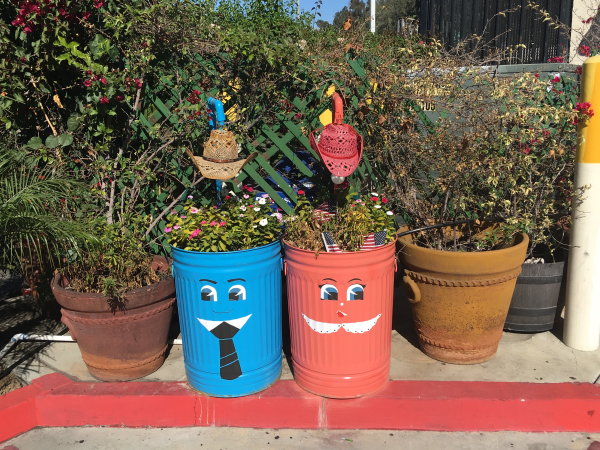

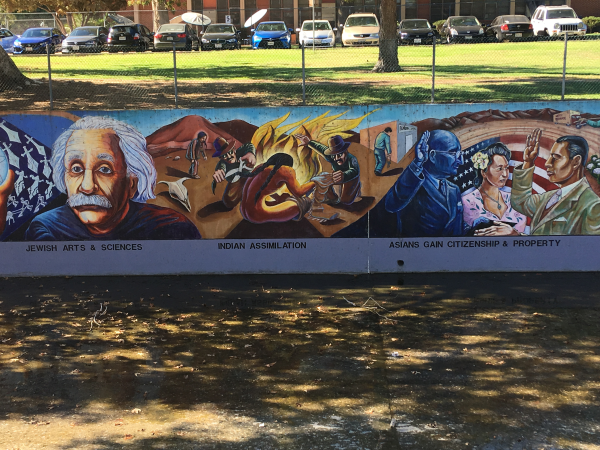
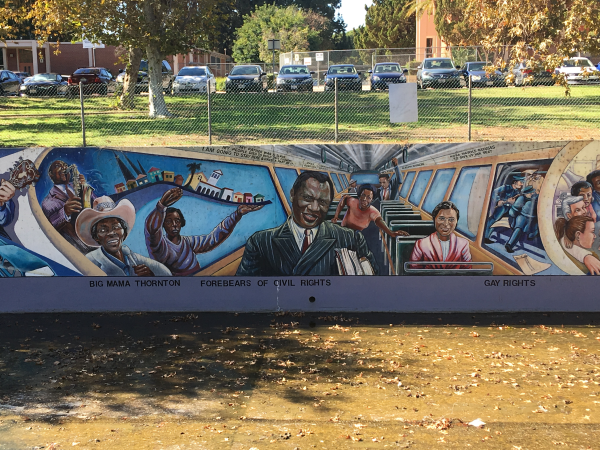
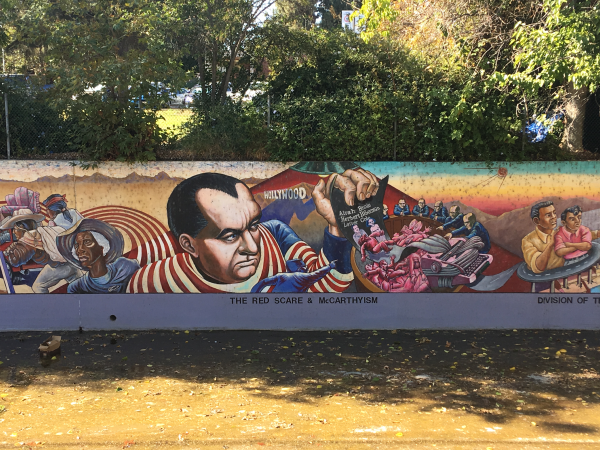
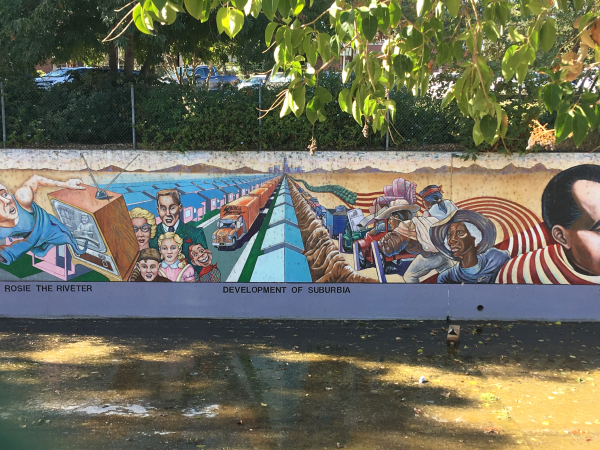
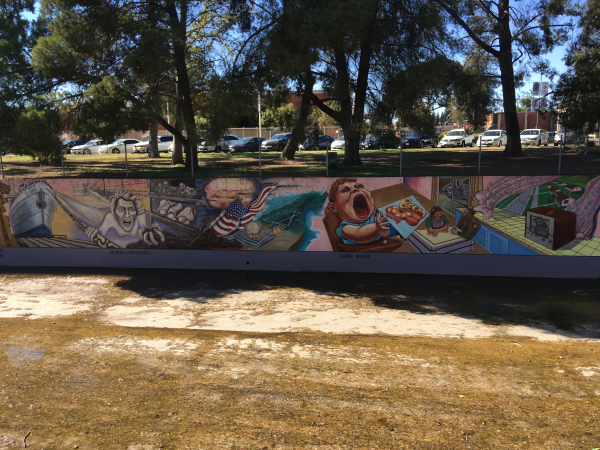

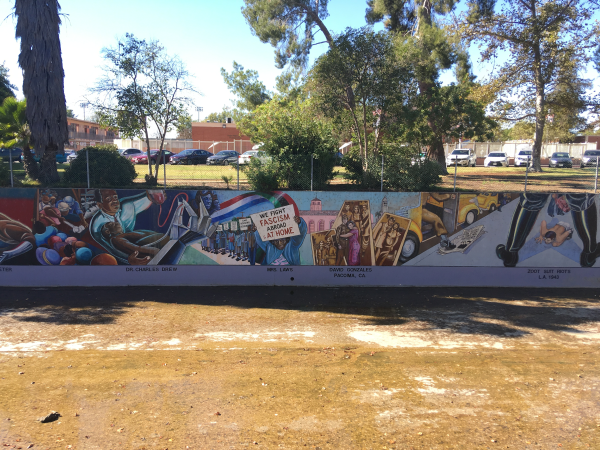
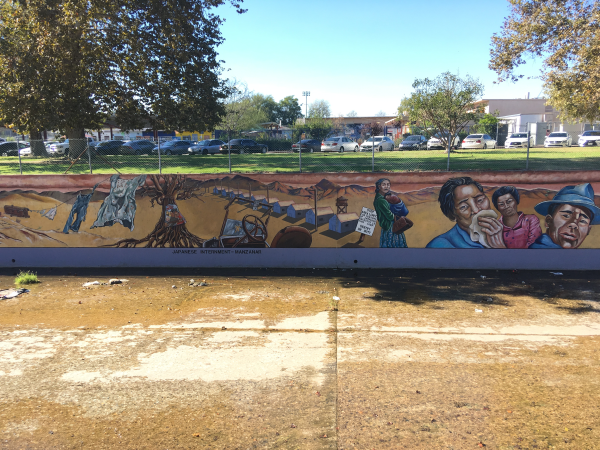
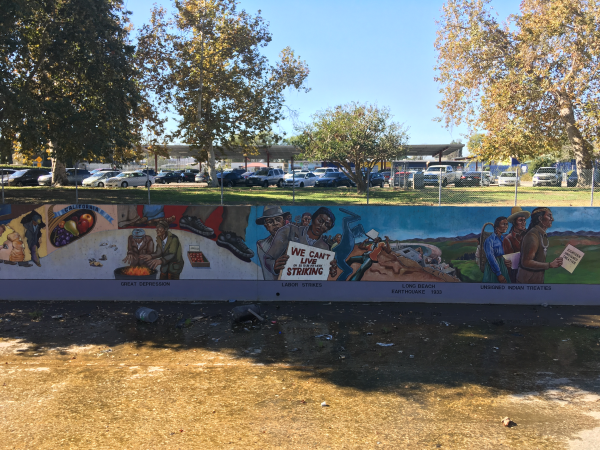
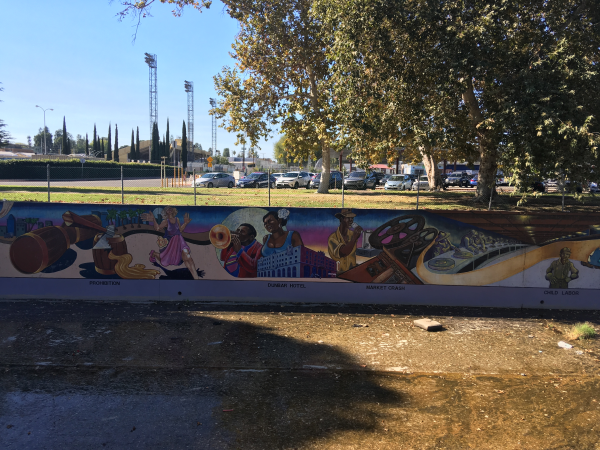
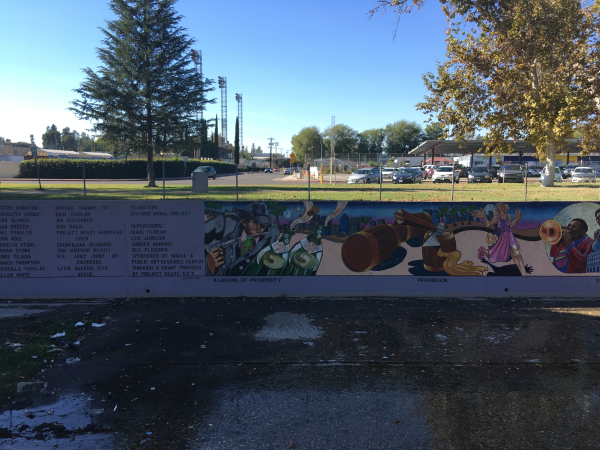
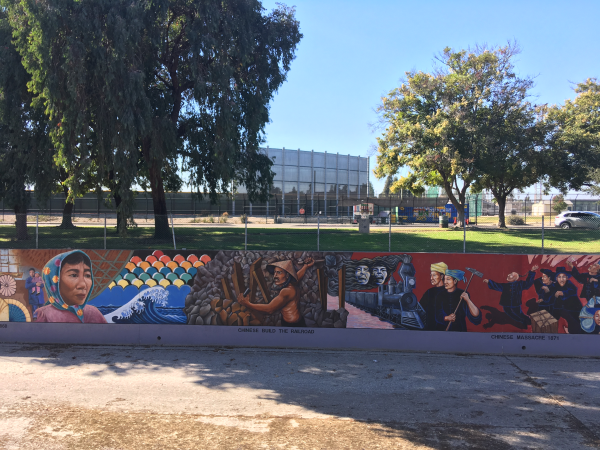
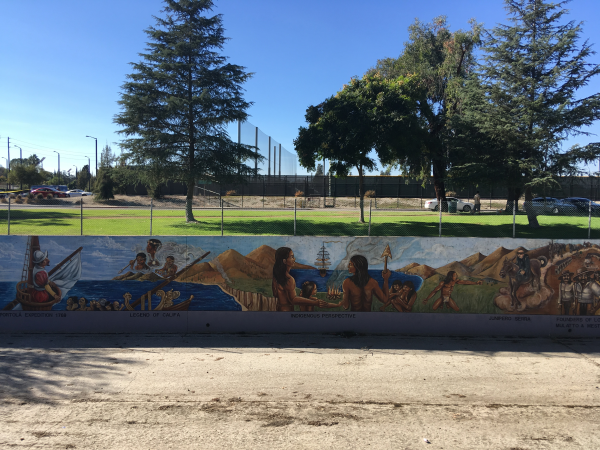
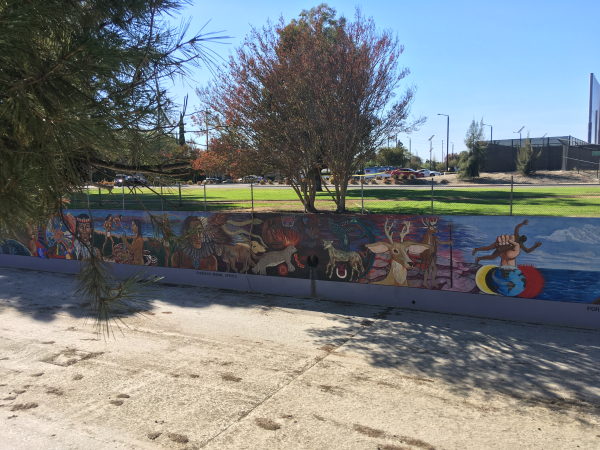
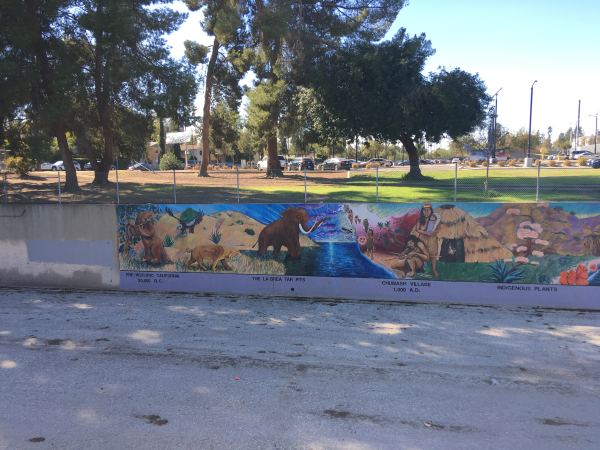
The Great Wall of Los Angeles.
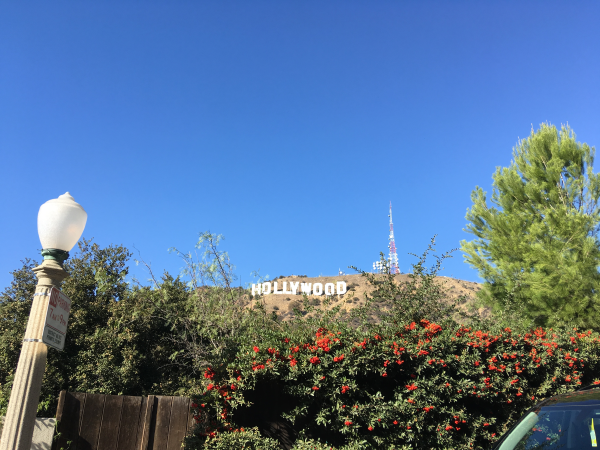
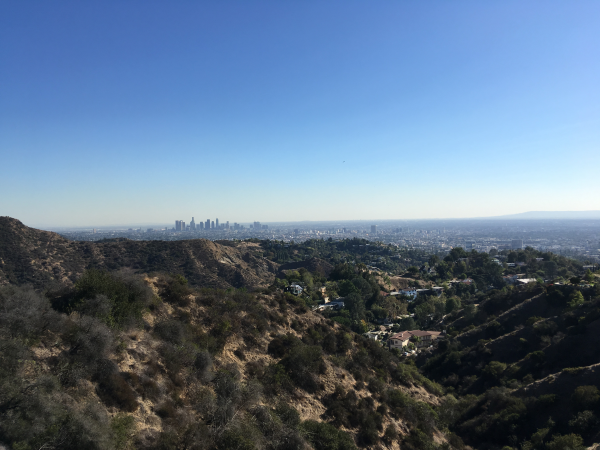
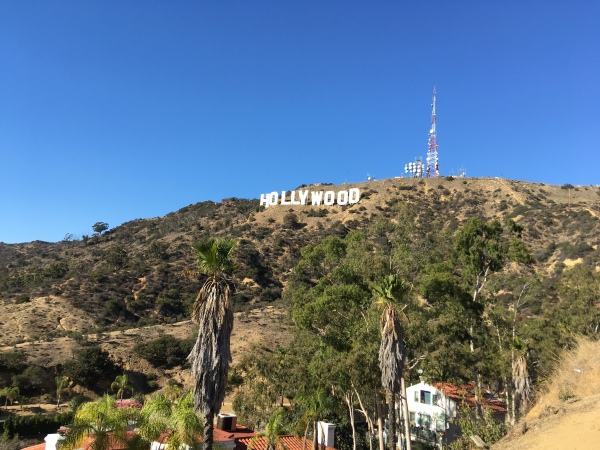
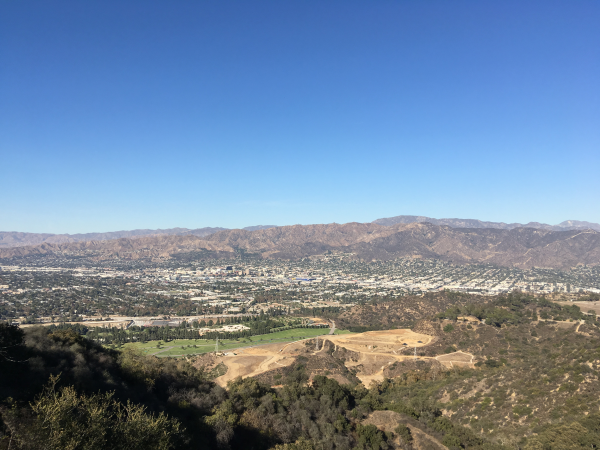
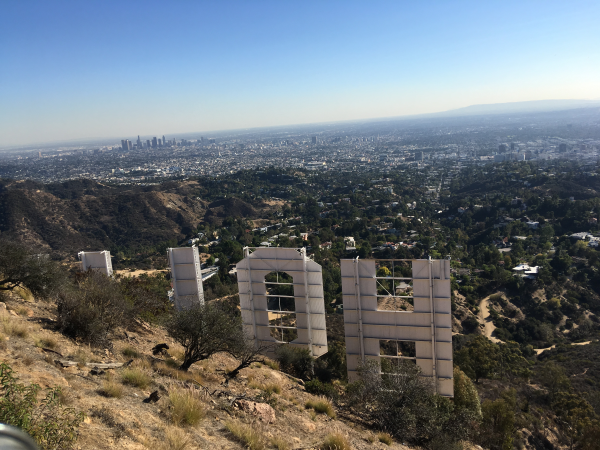
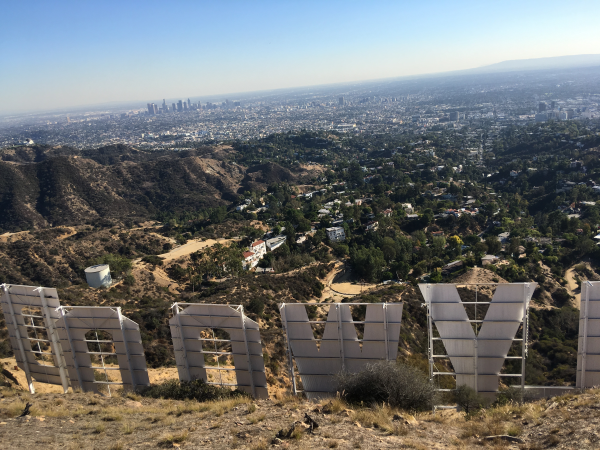
The big letters.
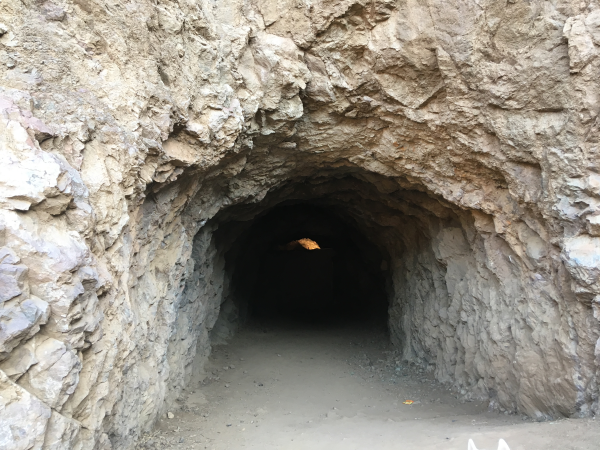
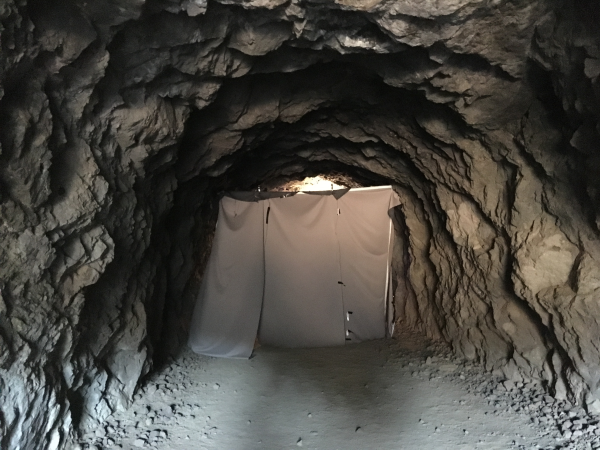
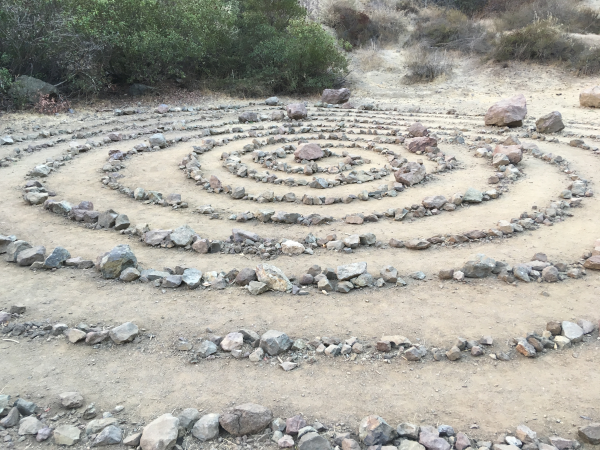

Bronson Caves.
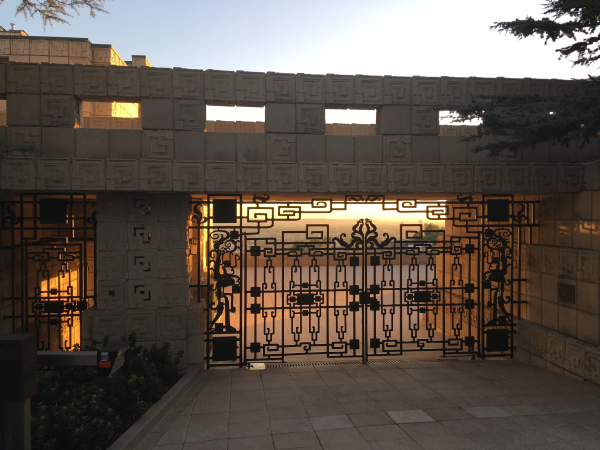
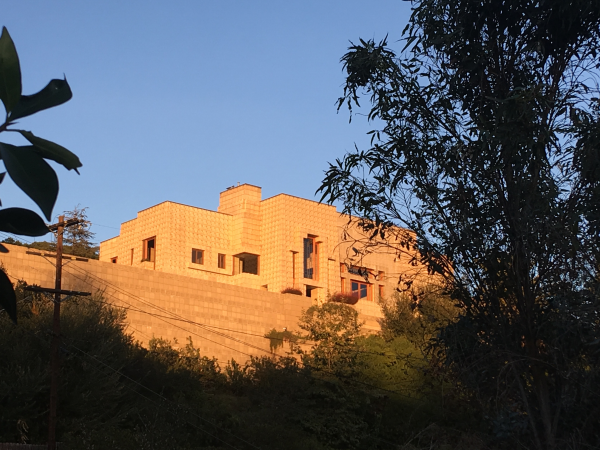
The only pictures I could get of the Ennis House without blocking traffic and pissing off all the uppity assholes who live in the hills.

Onward to Toontown!
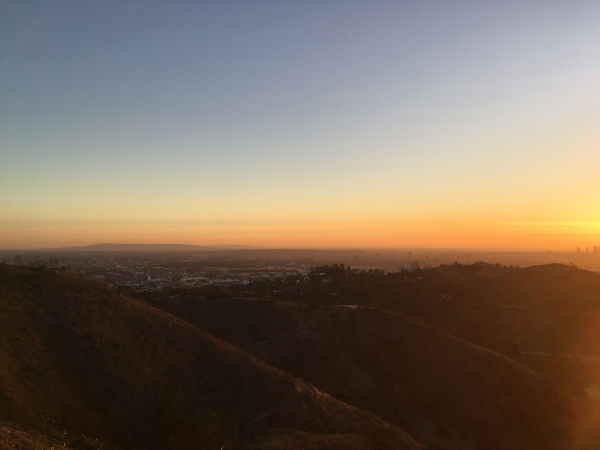
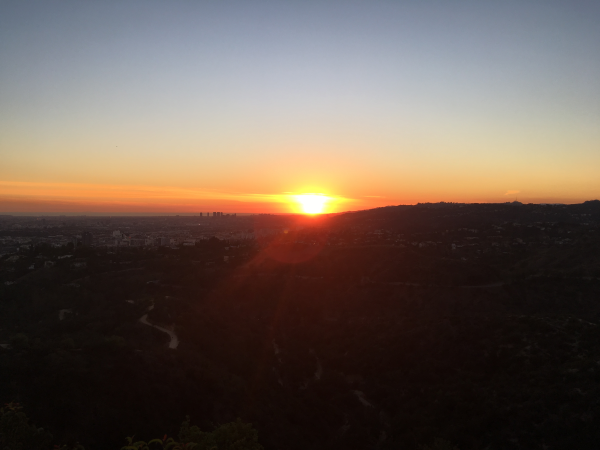
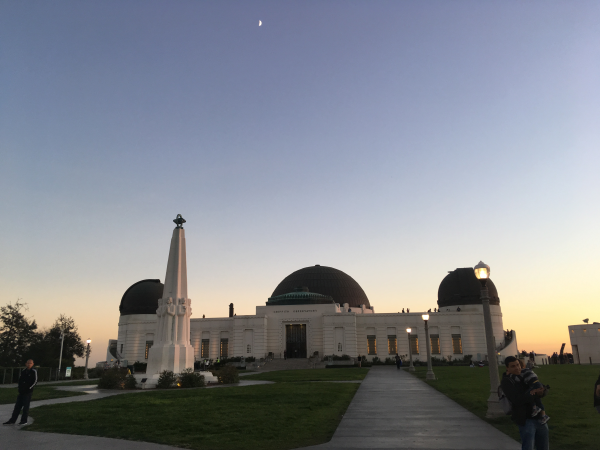
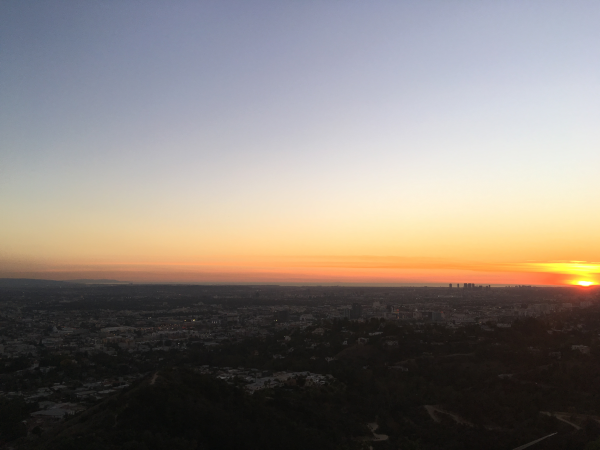
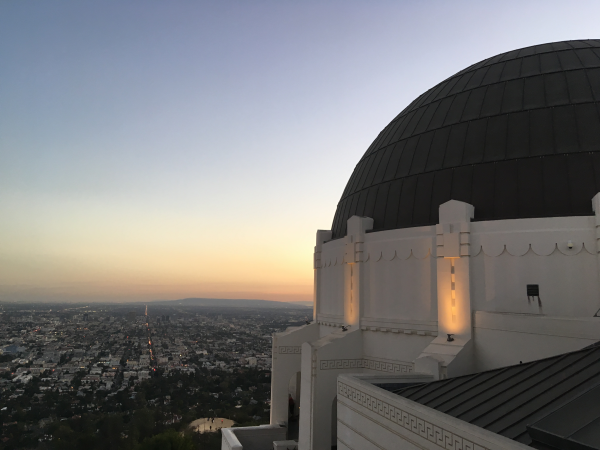
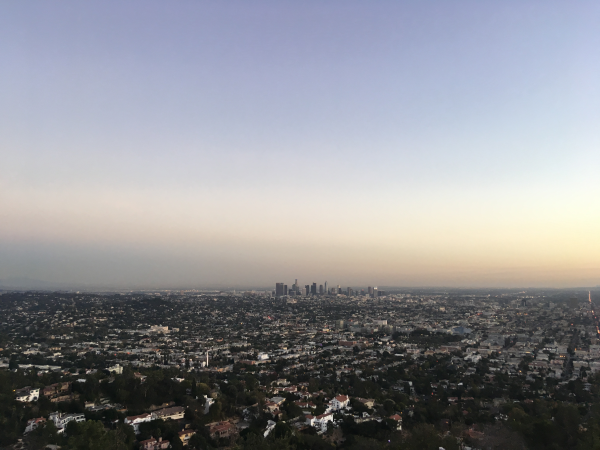
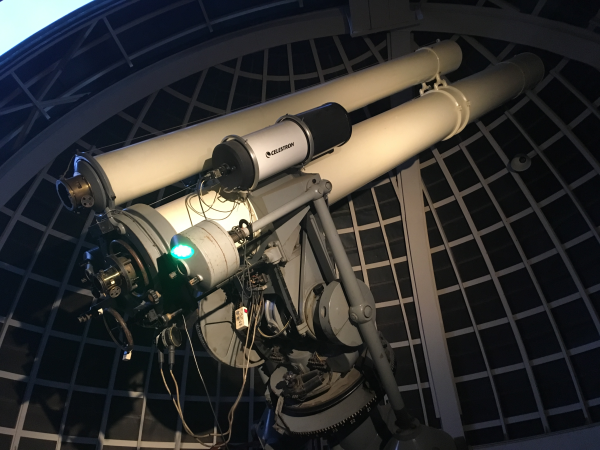
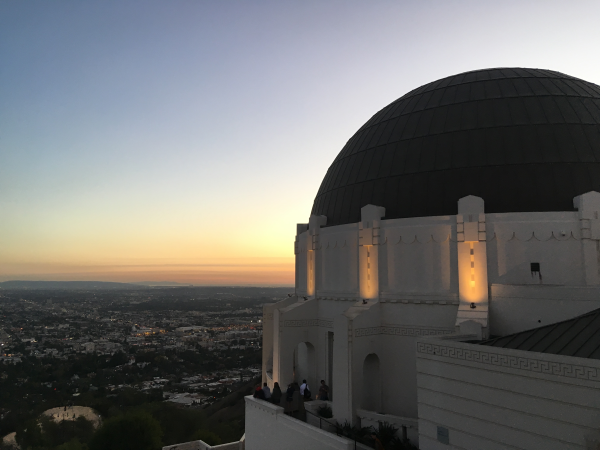
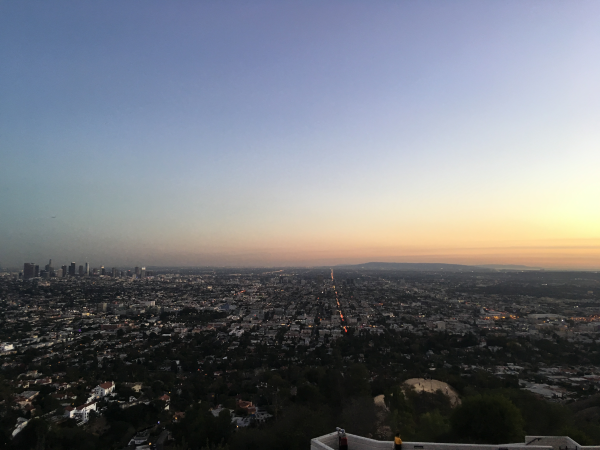

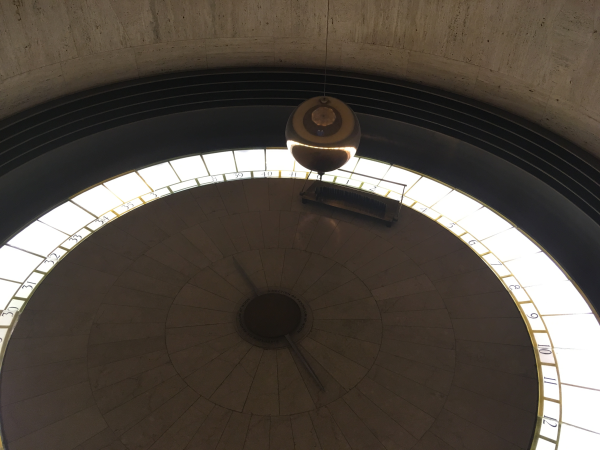
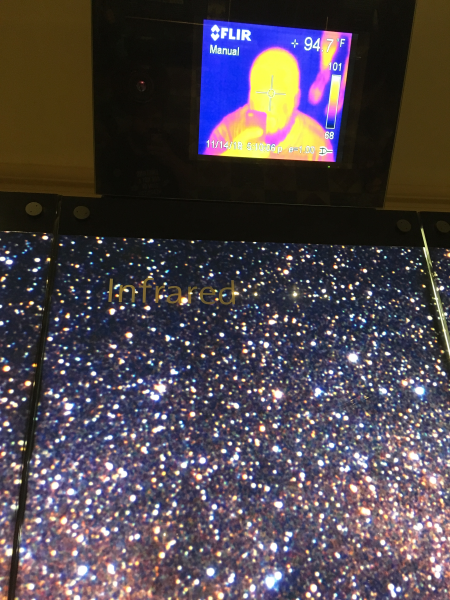
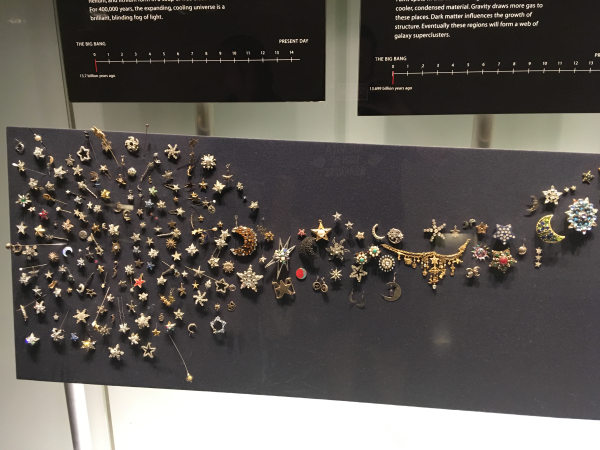
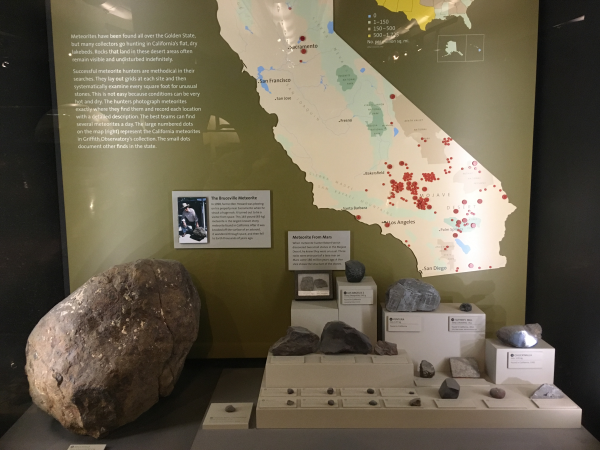
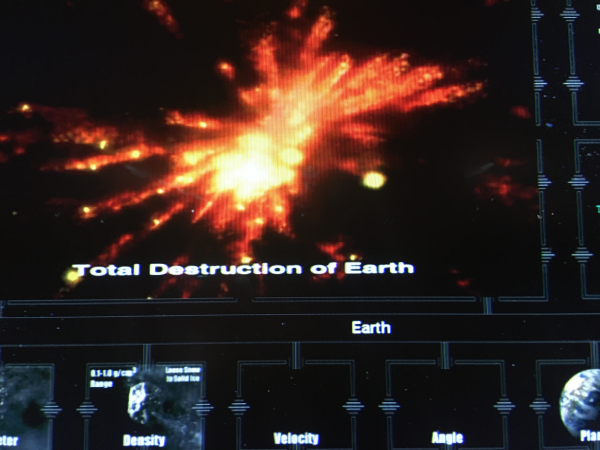
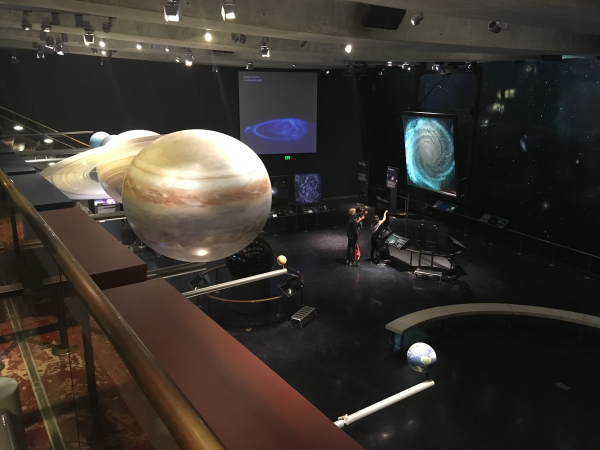
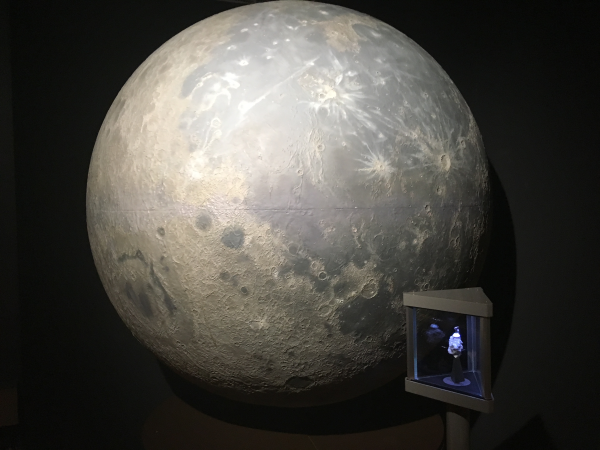
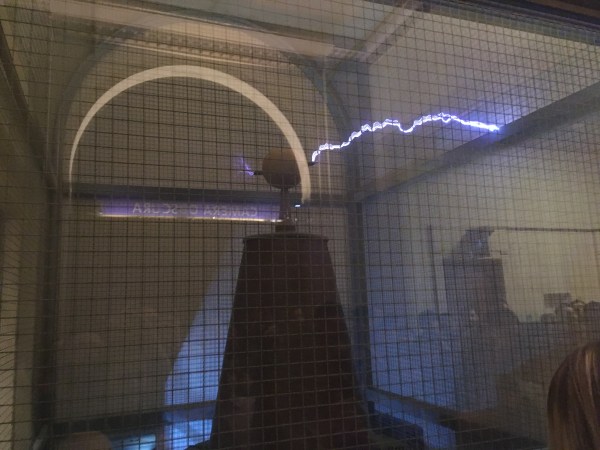
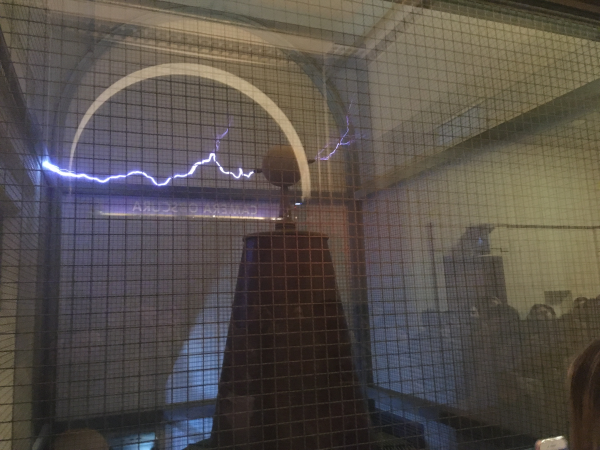
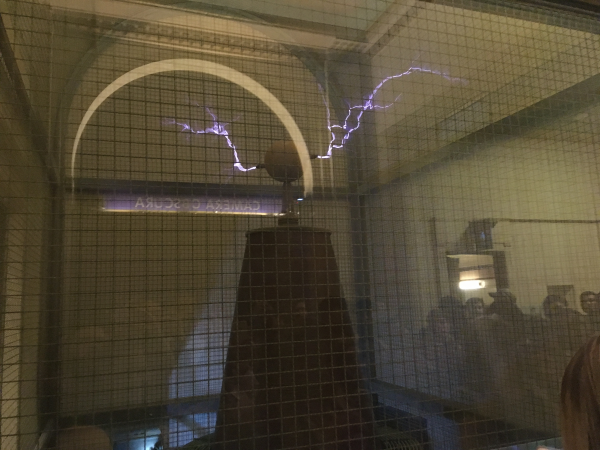
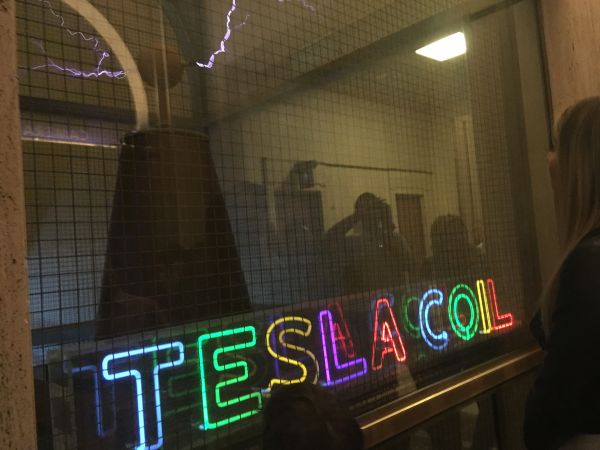
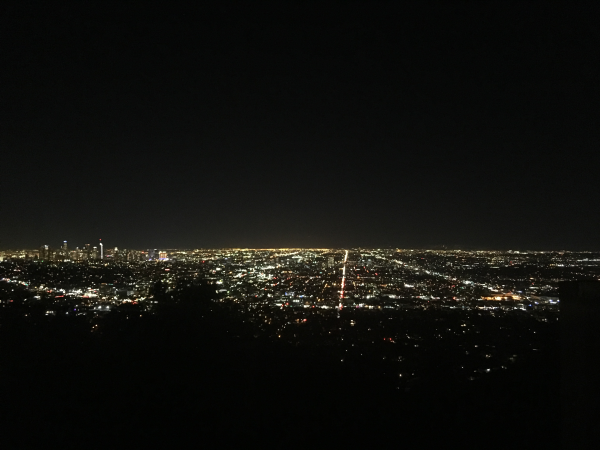
The sunset over LA from, and the inside of, the Griffith Observatory. So cool.
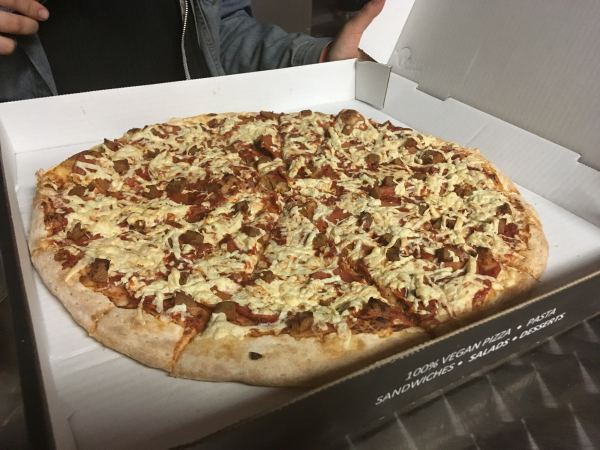
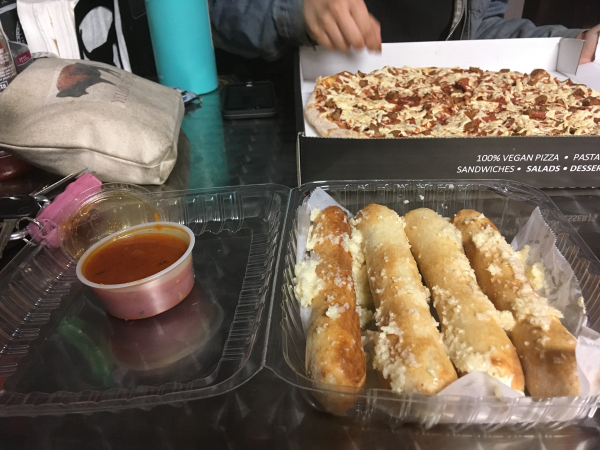
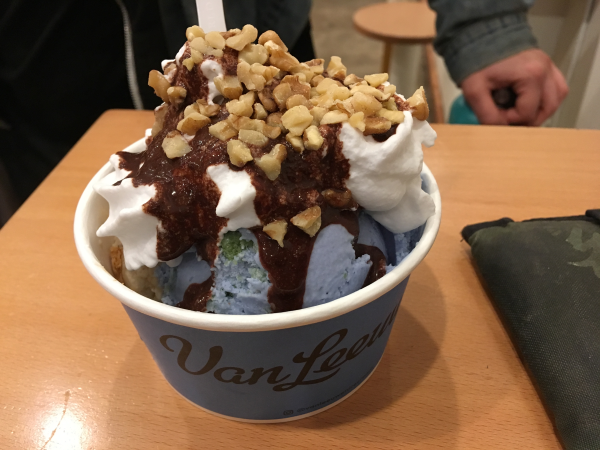
Cruzer's pizza and Van Leeuwen's ice cream!
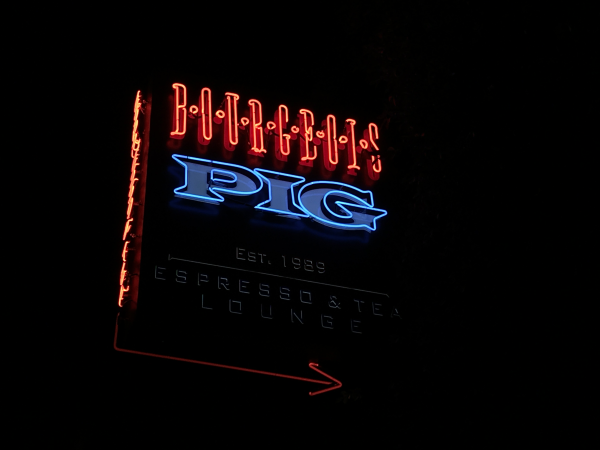
DAY EIGHTY
Thursday, November 15th
On one residential block in the Silver Lake neighborhood, there was the Chandelier Tree, a big, hundred-year-old camphor tree stood next to a quaint little home with a slight lean, adorned with 34 actual chandeliers from its many branches. Started with only three chandeliers salvaged from a movie set by the home owner, an airbrush makeup artist named Adam Tenenbaum, it was gradually expanded over the past eight years, illuminated every night by an intricate wiring system he rigged up himself. Monthly electric costs for just his tree got up to $200 a month, partly financed by the donations made at the '70s parking meter bedazzled in 17 lightbulbs, which took both coin and card. Sadly, we didn't get to experience its light show, being the early afternoon and all, but it had apparently been shut down by the city just a few weeks before we got there, anyway. After almost a decade, a cranky neighbor contacted the city, who then conveniently noticed not only some code violations, but that the tree was partly rooted on their property, giving them jurisdiction over at least the areas suspended over the corner public right-of-way that it cast shade over. They now suddenly feigned concern for the safety of pedestrians, and only insurance purchased by Adam could help that. Adam begged, pleaded, and succumbed to their demands, jumping through every hoop they presented, desperately trying to not become another quirky Angeleno yard project stamped out by the city that owed much of its personality and culture to these attractions. In the end, it seemed he failed, and the plug was pulled on it all--the city had literally made this small spark of light fade to darkness. Not far up the street was a giant, creepily detailed eye ball.
Another cool spot back in the vast Griffith Park were the ruins of the old LA Zoo, where a cute park had been set up around its abandoned cages and fake caves. Opened in 1912 on what was once Griffith J. Griffith's ostrich farm, the zoo started out with 15 animal inmates, some of which were donated by a film studio. Despite being a relative financial success, it was open for free, and soon became unaffordable while the quality of animal care severely declined. It was finally abandoned in 1966 so the city could build a newer, bigger one, which had been open since, eventually developing the old one into another facet of the greater park as a picnic area and hiking trail. We walked by the immediate picnic tables, which sat on the old bear grottoes, cheaply mimicked rock caves where polar and brown bears were once imprisoned for entertainment. We went inside all of them. Small stairways leading up to second floor rooms were locked shut by barred doors that looked no different from prison bars. Continuing along them were more enclosures that were completely fenced over, some likely previous cells for smaller animals. We walked up the trail that wrapped around them and got the view from above the grottoes, before stumbling on another enclosure where big cats were likely kept. It was sad that it only closed to make way for an even larger one, but still satisfying to see the ruins of a closed zoo. We kept hiking up the mountain trail where the dirt became dustier, waiting to find the monkey cages, but eventually gave up and turned around.
It was time to head back into the city.
Though I'd already been to both Museum of Death locations, I hadn't been to the one in LA in many years, and Alyssa had never been there at all. We wound up spending the rest of our remaining daylight hours very slowly and carefully combing over every placard, lengthy biography, and artifact in the place. Founded in 1995, it all started with the artwork and letters received by the two founders from the convicted serial killers they corresponded with as a hobby. Inside, there was a room of artwork by and of serial killers, including several pieces by John Wayne Gacy; a room about execution, detailing its history and exhibiting several antique pieces, including the bloodstained shirt of a botched electric chair killing and the mummified decapitated head of French serial killer Henri "Bluebird of Gambais" Landru; rooms filled with contemporary to modern pieces from the funerary industry, with a TV playing an old instructional video on embalming being demonstrated with a real corpse; halls of real crime scene photos; a room dedicated to Hollywood murders, particularly the Black Dahlia and Charles Manson; a room full of original Heaven's Gate cult memorabilia next to a detailed mock-up of the iconic bodies under bunk bed sheets with their Nike sneakers sticking out, using the actual beds the suicide victims were found lying on; rooms packed with skulls, shrunken heads, and taxidermy animals; and a theater playing more autopsy videos. The founders said they wanted the museum to, "make people happy to be alive." An appreciation for life and its vulnerable finitude had always been a huge reason why death and gore always interested me. Pictures were not allowed in the museum, and I respected it.
By the time we got out of the museum, it was nighttime and everything else we wanted to do was closed. That meant it was time for dinner. Now, Los Angeles was full of these vegan Thai places, and even vegan places that weren't exclusively billed as Thai that still served mostly Thai food. Green Leaves was one of those places, and had one of the biggest, cheapest, most eclectic menus we'd ever seen. It was a challenge to choose what to get for dinner, so we got a bunch of stuff that in no way complemented each other. I got pancakes with fried chicken, the Melody stir fry with tofu, and fried fish and chips! Everything was incredible, and I didn't have to feel like I burned a ton of money afterwards.
On our way to Bourgeois Pig, we decided to go to a late night show at the Upright Citizens Brigade Theater called "We're Gross with Gilli Nissim", which was described as a talk show that shamelessly discussed gross things. I always loved going to a random show at a UCB Theater whenever I was in Los Angeles or New York City; plus, it was cheap and would give us something to do after dark for a change. So we gave it a try. Alyssa was preemptively pessimistic about the quality of comedy we were about to see just because of her general idea of what most improv was like, which was fair. When the host came out with her pants down and her underwear pulled as tightly up her vagina as possible while acting like she didn't notice for the first 15 minutes, we feared it was about to be some try-hard Amy Schumer shock humor bullshit, but the bulk of the show was actually really funny, albeit more thanks to the co-stars they brought on stage than anyone else. The host was especially annoying. At one point, they decided to smoke a joint on stage and, "get high while brainstorming a bit, live," which was an incredibly corny act of conventional rebellion I thought reserved for teenagers, but also made me very genuinely uncomfortable, especially after the joint was then shared and passed from person to person across the entire room, forcing me to have to decline a joint being passed to me. I cannot describe the panic that overwhelmed my entire body as everyone began smoking weed and cracking open complimentary beers. The smoke and smell hurt my head and I felt like everywhere was a shitty house party that I could never, and would never, escape. The presumptive attitude that everyone partook in intoxication culture was offensive in and of itself, but I should have been able to enjoy a comedy show without having a joint handed to me!
Afterwards, we found what we thought was a $100 bill underneath our seat. Whenever I'd see money on the ground, my reflex was always to grab it first in whatever way I could. So I immediately put my foot over it before quickly placing it in my pocket. It wasn't completely unbelievable that someone in that audience would just drop a hundred dollars. It felt and looked real. We wouldn't realize it said "For motion picture use only" on it until we were about to use it on gas a few days later.

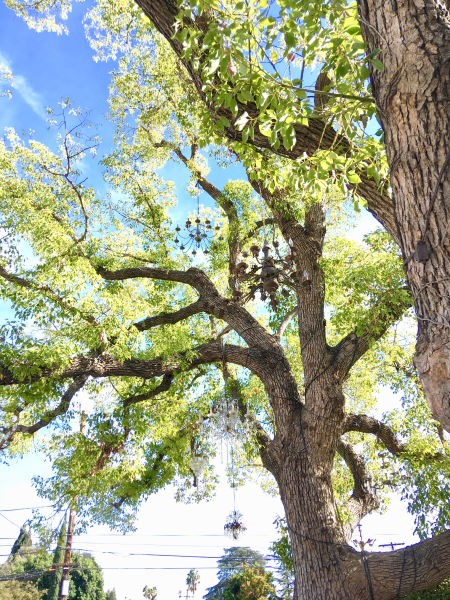
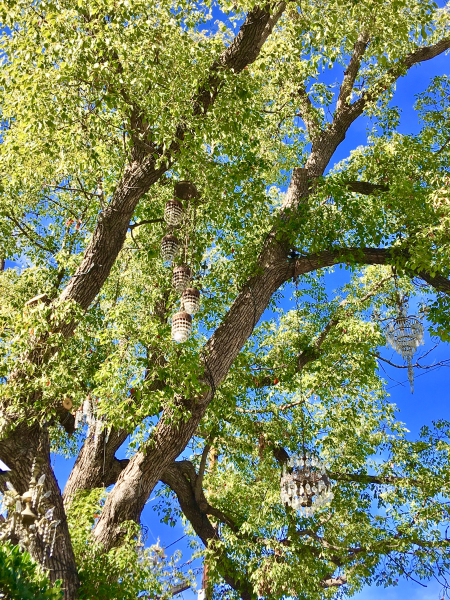
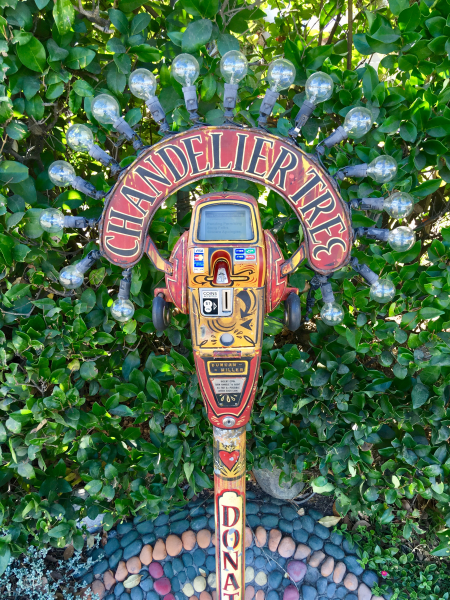
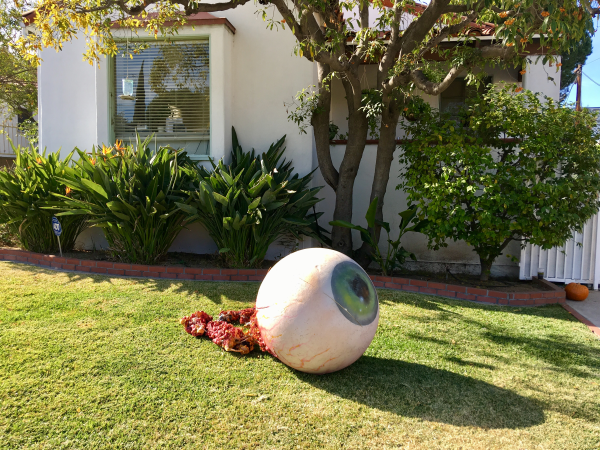
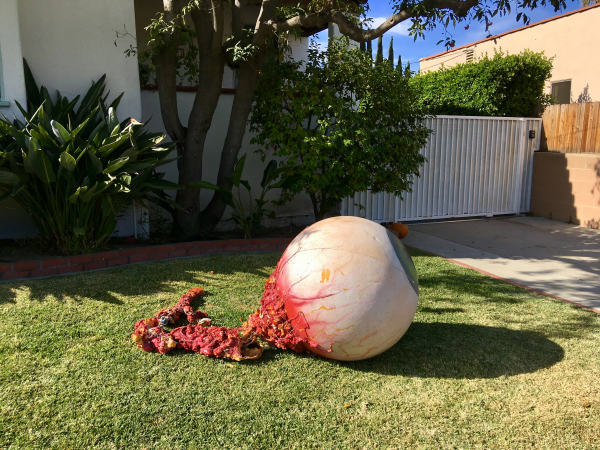
The Chandelier Tree (RIP), and the giant eye ball.
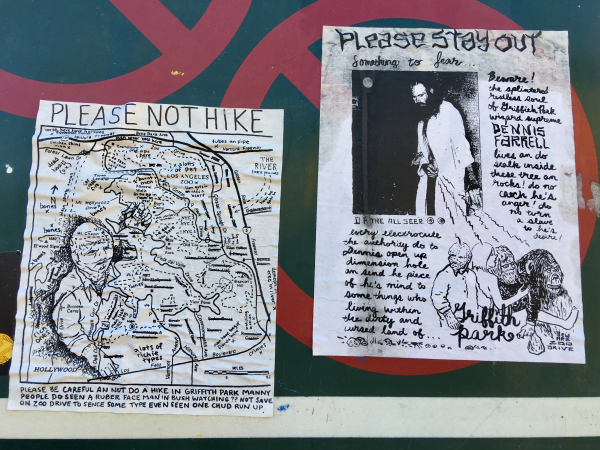
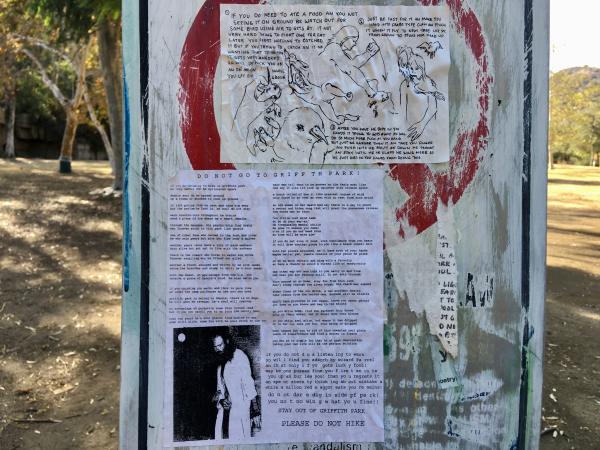
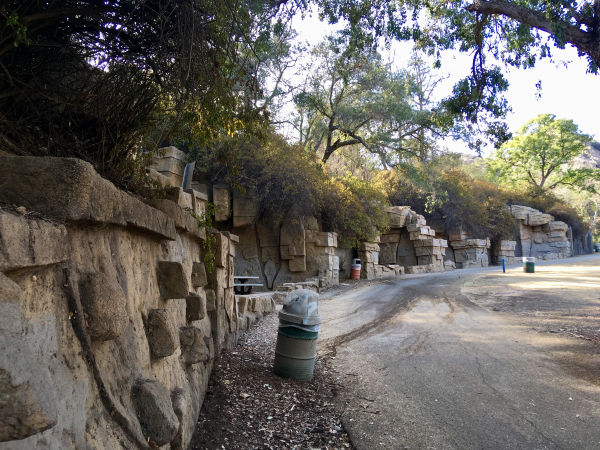
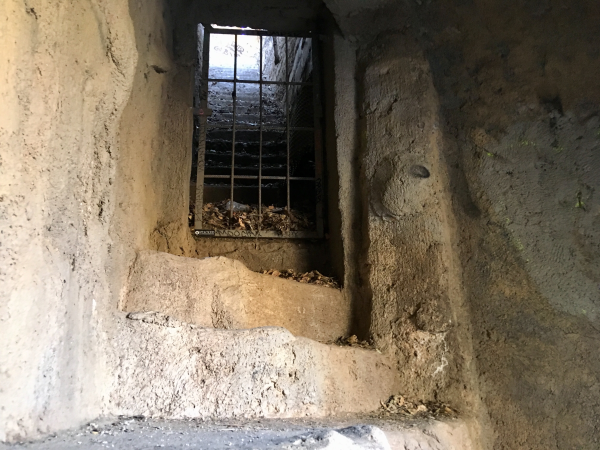
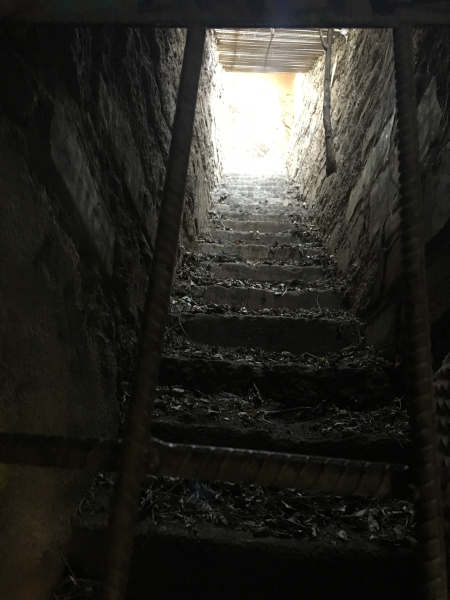
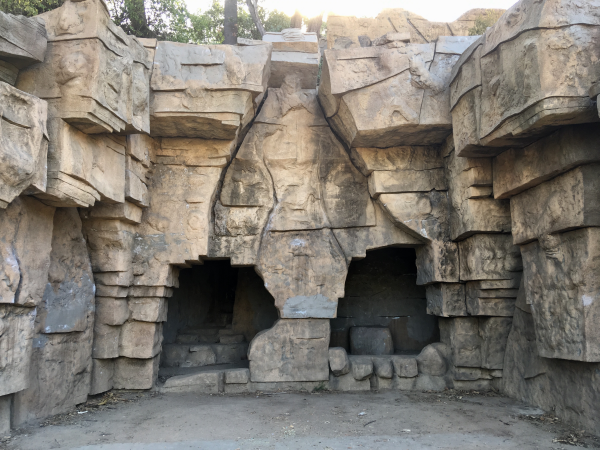
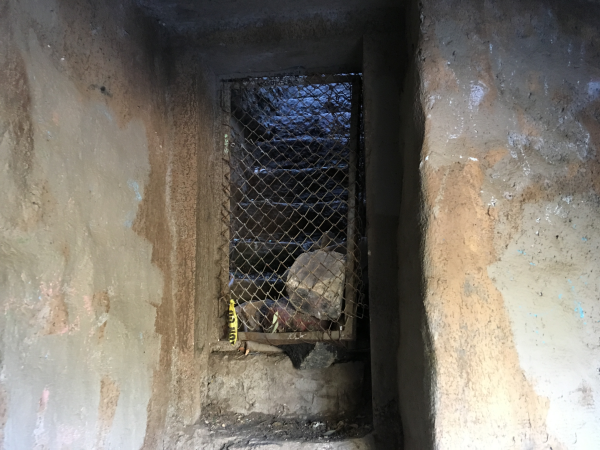
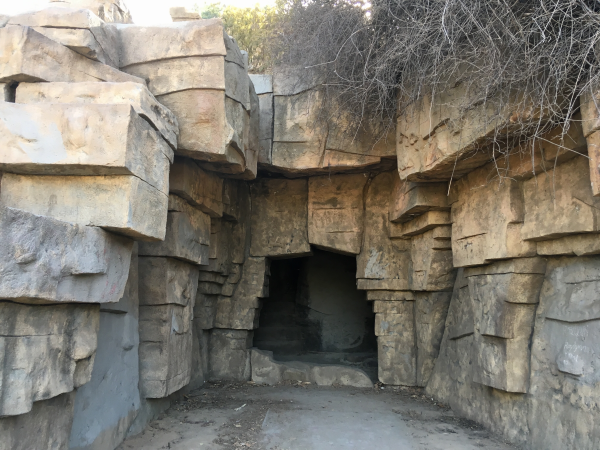
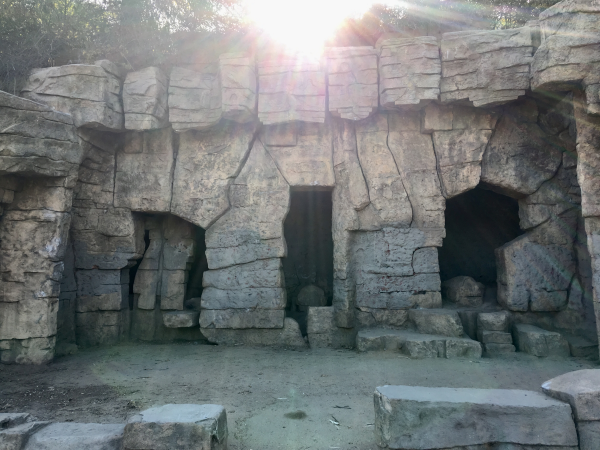
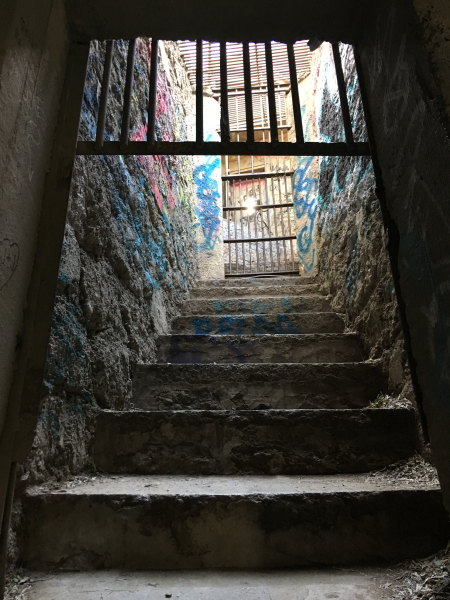
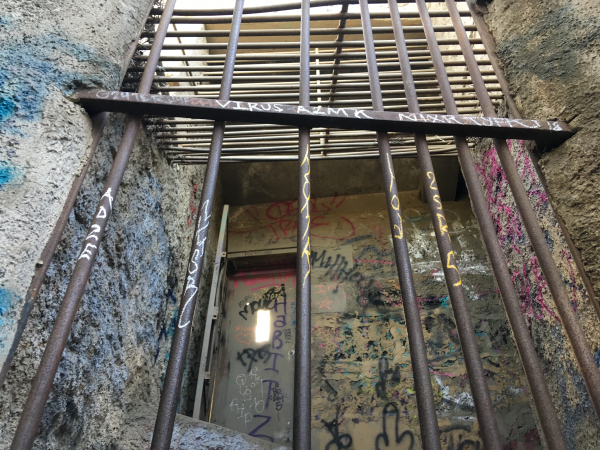
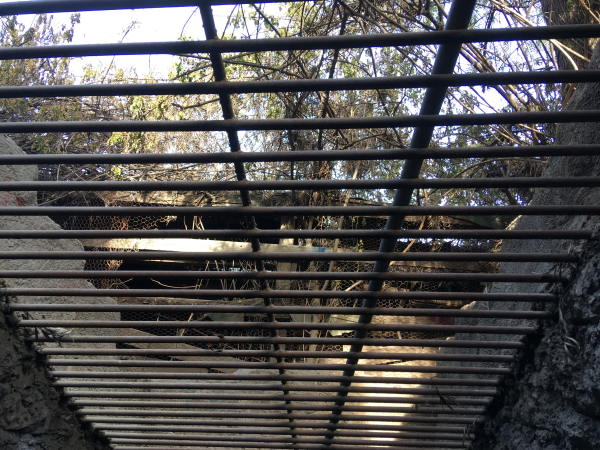
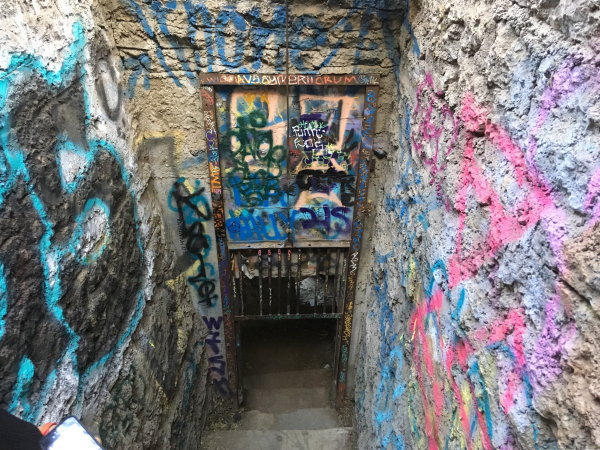
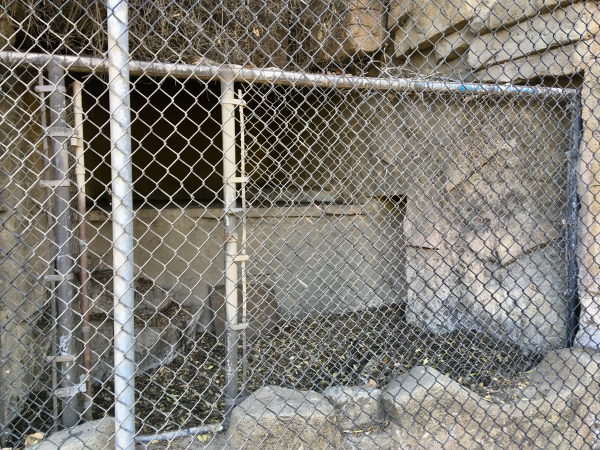
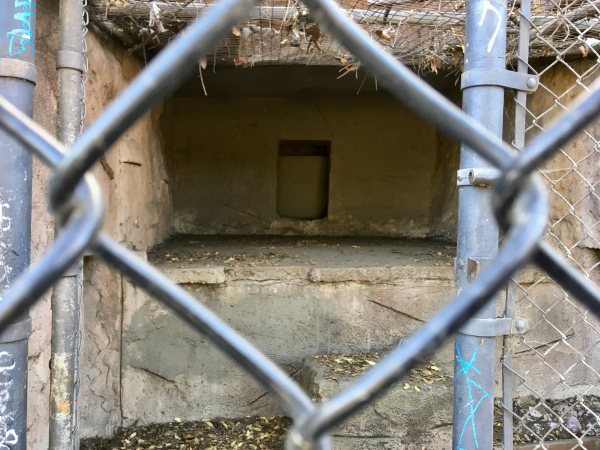
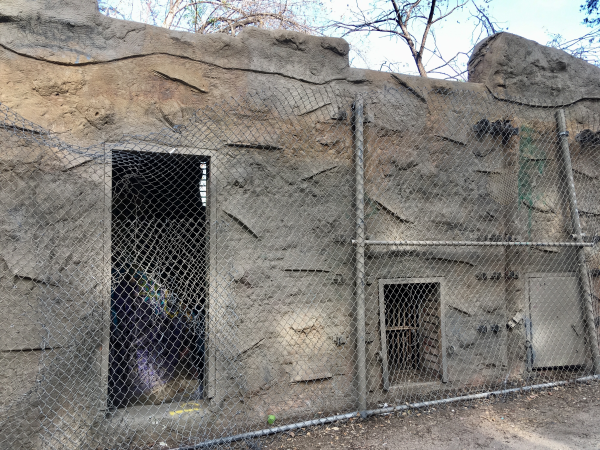
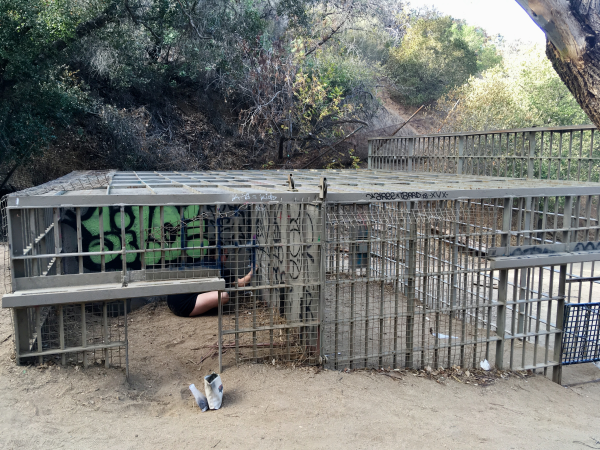

The Old LA Zoo.
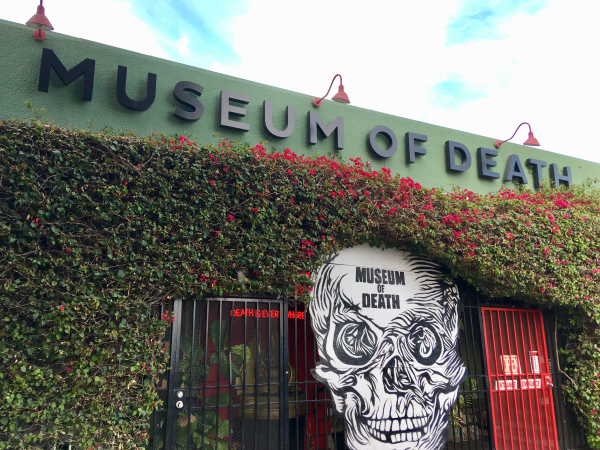
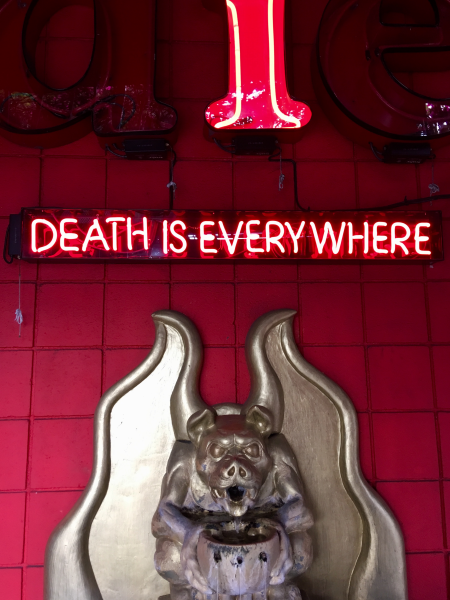
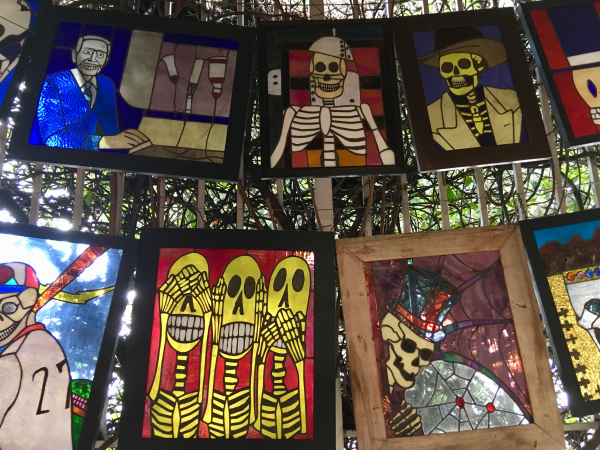
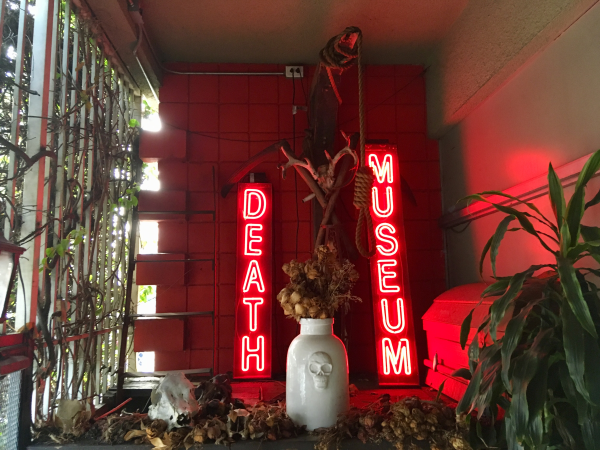
What pictures I was allowed to take at Museum of Death.
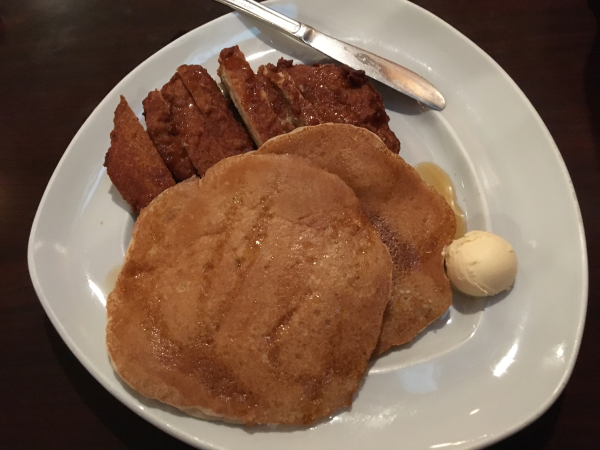


Green Leaves!
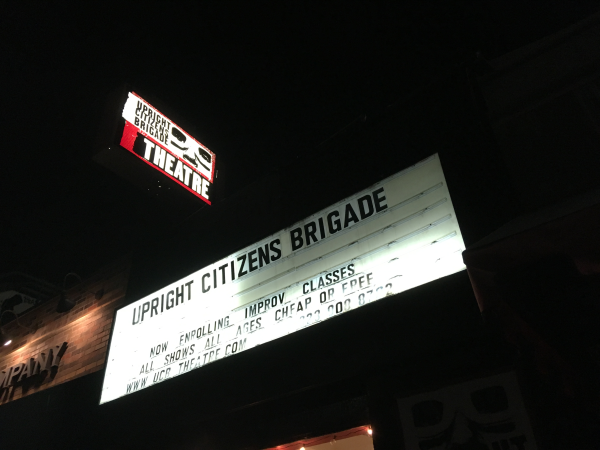
DAY EIGHTY-ONE
Friday, November 16th
The next day, we tracked down some famous houses from horror movies that I grew up on and that Alyssa had never seen before. Los Angeles was full of them, but it would have taken all day to see more than these few houses. The first two were conveniently across the street from each other and were both used in the first Halloween film by John Carpenter: the Wallace house and the Doyle house, both homes stalked by Michael Myers before a series of murders, including the attempted murder of Laurie Strode, played by Jamie Lee Curtis. The third was Nancy Thompson's house in Nightmare On Elm Street by Wes Craven, easily my all-time favorite horror franchise. Like in the movie, the address number was 1428, though it wasn't an Elm Street. The door was red then, but the house was otherwise unchanged. It was a nice stroll around blocks of rich homes, in the name of my childhood and the presence and impact of horror movies throughout it.
We went to the Hollywood Forever cemetery, where a ton of Hollywood legends were buried. At first, all we saw were a lot of field corners sloppily congested with black gravestones engraved with the strongly Hebrew, Polish, Russian, and Asian names of unfamous people on them. When we were approached by a friendly squirrel, we sat down on a curb and became distracted by feeding them dumpstered sunflower seeds for a while. We walked around and hunted down a handful of graves we wanted to see. We saw the grave of Mel Blanc, the voice of virtually every original Loony Toon, and arguably my and many others' childhoods. We saw Judy Garland's new mausoleum inside the pavilion named after her. We absolutely could not find the grave of Gidget Gein, one of the founding members of Marilyn Manson. We stumbled on the elaborate and expensive grave of a man named Pete T. Stanley, whose site included a detailed stone piano. Despite such a spectacular memorial, we couldn't find any information whatsoever about the man online. We saw an angel's balls. We hunted down the modest indoor grave of Art Pepper, a musician and saxophonist Alyssa respected. We then again became distracted, this time by feeding a peacock some of the sunflower seeds, who was later joined by our squirrel friend. By the pond, we saw a cenotaph for The Wizard of Oz's Toto, though he wasn't actually buried there, nor was actually named Toto (his name was Terry), nor was even a male dog, and not far from him the tragic bronze statue and grave of the late-great Anton Yelchin. Neither of us were at all interested in monuments to any Ramones or the classic actors from the past.
Necromance was another oddities shop full of beautifully morbid artifacts and an atypically equal balance between human and non-human animal pieces. There were naturally plenty of washed bones of dead animals and the pinned bodies of preserved insects, but unlike many other shops we felt relied too heavily on taxidermy and animal corpses, this place was also full of authentic human parts. We asked the overtly goth woman working how their animal parts were acquired and got told they were all allegedly scavenged naturally, while other things were secondhand antiques. They also had preserved spiderwebs, antique medical and surgical tools, vintage zoological prints, rocks and minerals, and jewelry. As always, we purchased nothing. The sale of dead animal parts would never sit well with me, though certain conditions did seem like ethical grey areas. Thankfully, we could browse those sorts of places as if they were free museums. This was one of the more tasteful curio shops we'd visited.
We of course had to stop by the Elliot Smith "Figure 8" wall. I wasn't sure when the last coat of paint was added to maintain it, but the colors were a little muted. There were only a few tags on it honoring his memory, though. A Filipino bar opened up on one half of it, so only one side remained of the full mural. Room 8 was a stray cat who waltzed into a classroom at Elysian Heights Elementary back in 1952. He instantly became a fixture of the school, living there during the class season and disappearing during summer vacation. When a new school year would begin, he'd be back there right on the first day. He was named after his favorite classroom. In time, he became famous, and news cameras would be there waiting for his arrival at the start of each school year. The school would receive a hundred letters a day addressed to him, and his fame led to being profiled in numerous national magazines, a documentary, and a children's book. In his older years, he got hurt in a cat fight and was taken in by a nearby family. He still visited the school, but would be returned across the street to his second forever home by the janitor, every day until he died at the age of 21 in the comfort of an animal hospital. His long obituary ran in papers ranging from local all the way to the east coast, and he was buried at a local pet cemetery with a grave stone funded by money raised by the students. Now his memory surrounded the school, and his paw prints were even eternally imprinted in one of the many inscribed sidewalk panels around it, which included stories and drawings by past classrooms of their memories of him. A beautiful mural could also be seen behind the gate. More proof that non-human animals made this world a more magical place.
As the sun set and we walked along Sunset Boulevard, we stumbled on a farmers market taking up a whole block in Echo Park. We walked around and enjoyed the nightlife. It was such an event for the community in a way I had never experienced back at home. We got some homemade vegan empanadas from a nice lady that were absolutely delicious. We stopped at an odd little place called the Time Travel Mart, which boasted its specialization in materials for time travelers. The place was one big clever joke brought to life, selling absurdly ephemeral gag goods like time travel sickness pills, powdered robot milk, dinosaur eggs, canned mammoth chunks, and absurdities. I couldn't figure out what any of their items actually were, because they were made to look so authentic. Even their community bulletin board was covered in ads that went along with the joke. All their proceeds went to a local non-profit called 826LA, which supported students age 6-18 along with their teachers, trying to create enriching environments that inspired and encouraged kids to be creative and to get into writing.
Since Thanksgiving was coming up, the billboard on top of the PETA LA offices was very vegan. We stopped at Donut Farm for doughnuts. They were pretty okay. We had dinner at a vegan spot called Flore. I got their signature burrito, which was stuffed with brown basmati rice, black beans, tempeh bacon, cilantro cream cashew cheese, avocado, lettuce, and tomato. We got a strawberry chocolate cake for dessert. Every restaurant in LA was so goddamn expensive.



Horror houses, then and now.
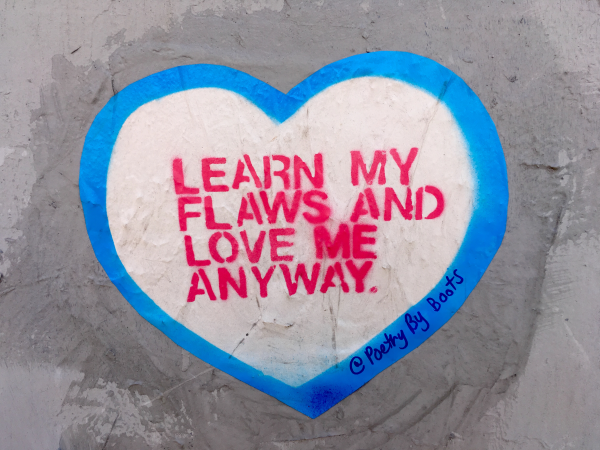
Alyssa made fun of me and said, "Look, this is graffiti you would like," because it was cheesy and emotional. She was right.
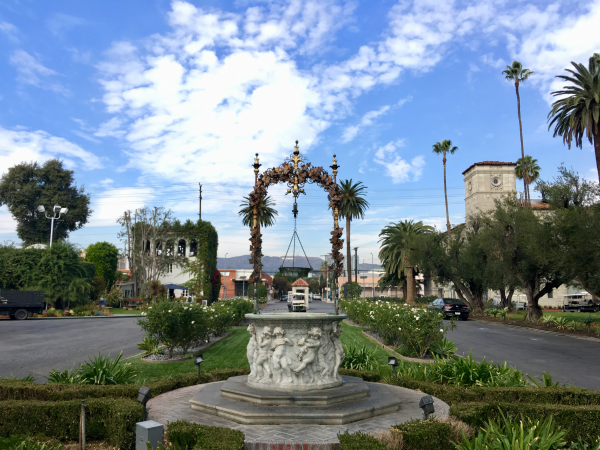
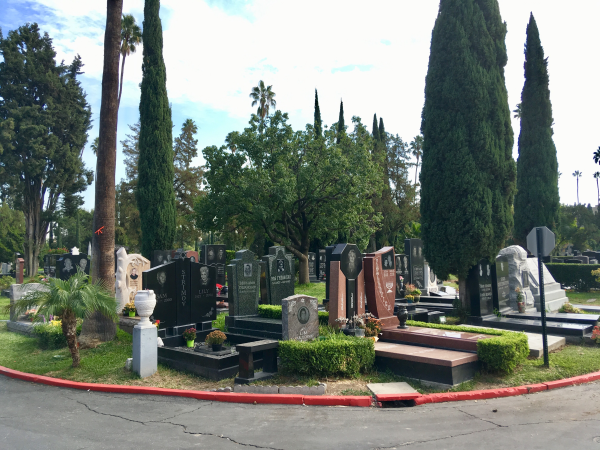
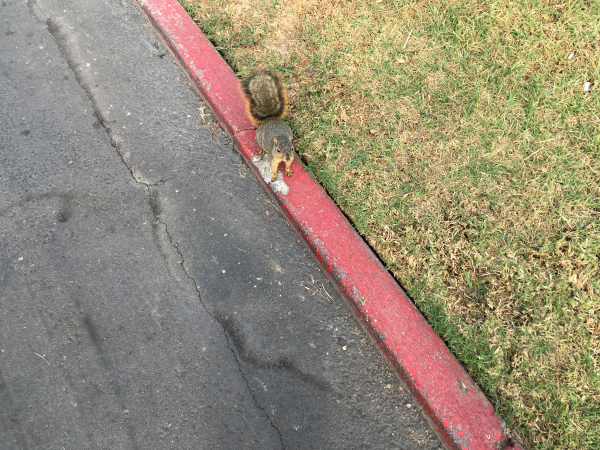
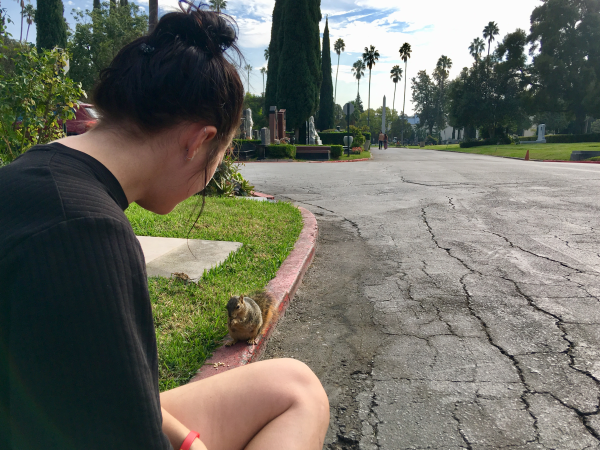
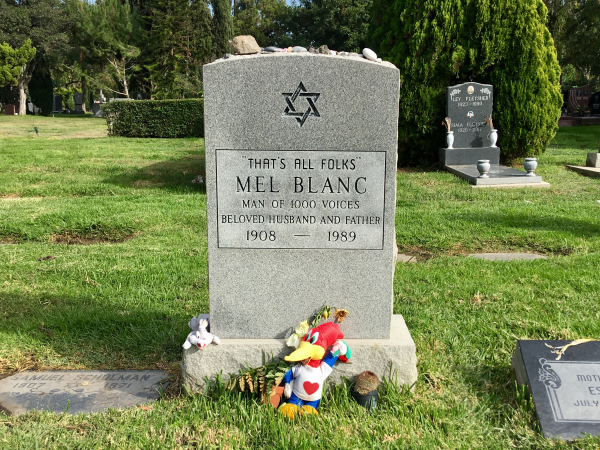
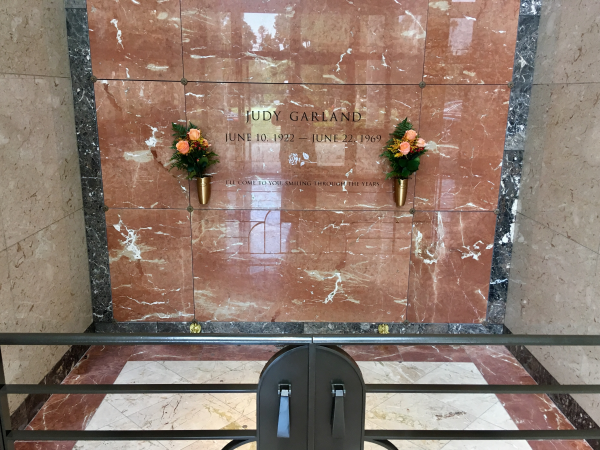
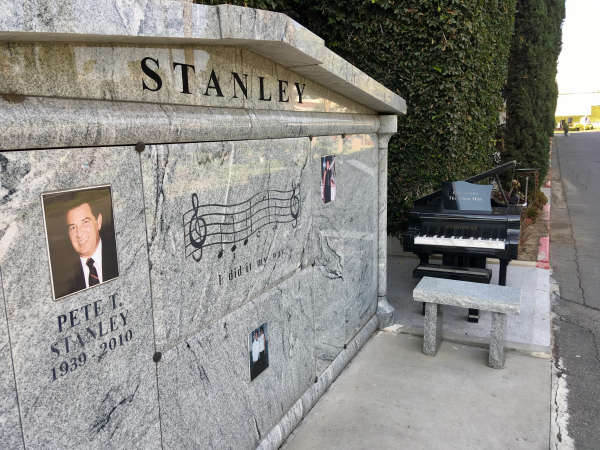
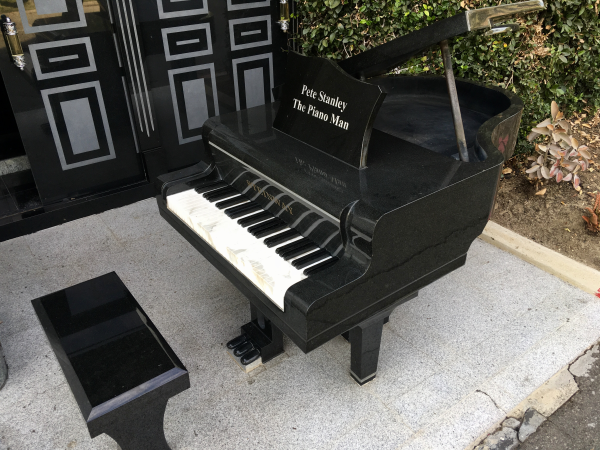
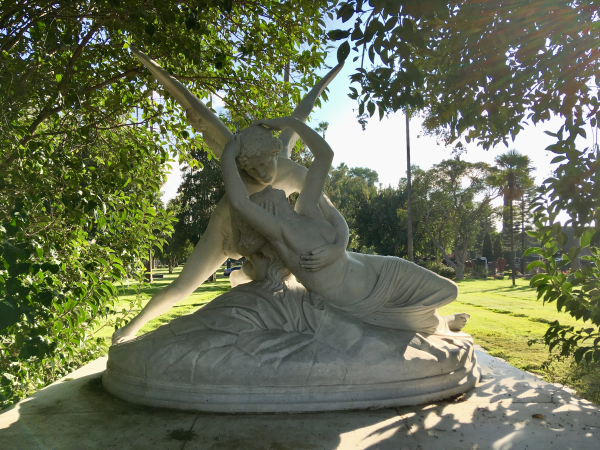
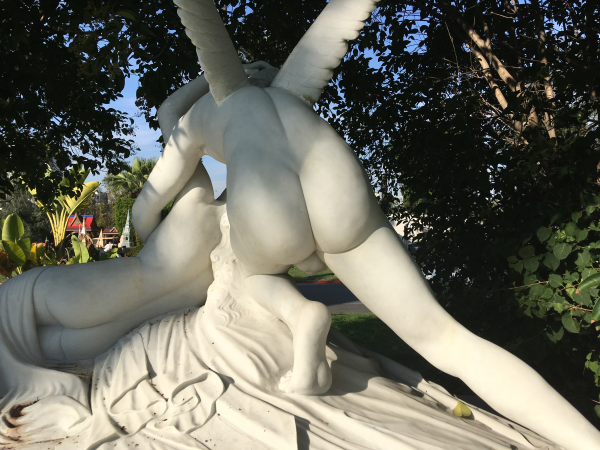
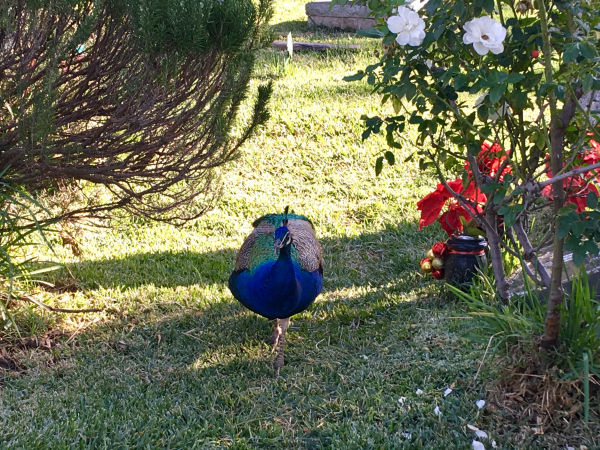
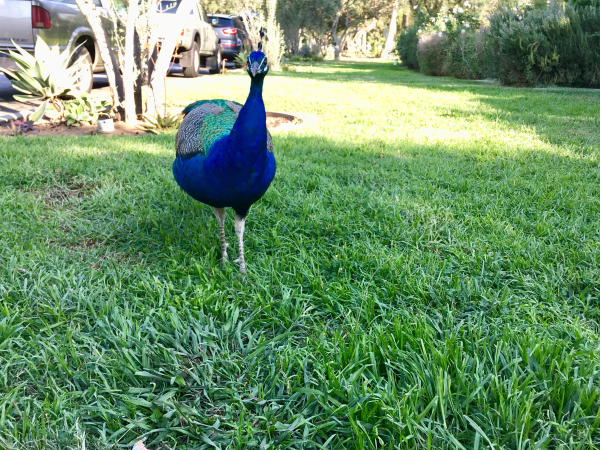
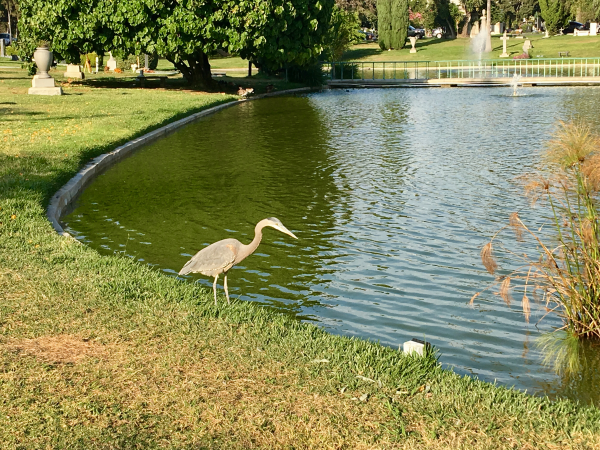
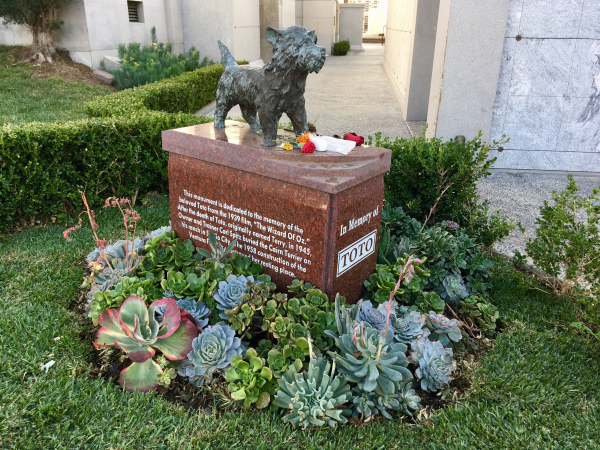
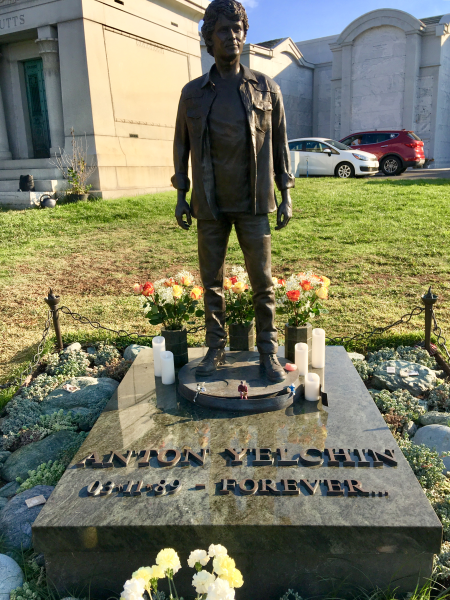
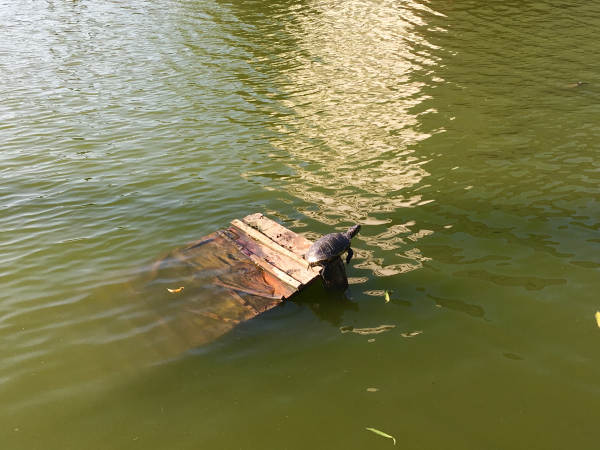
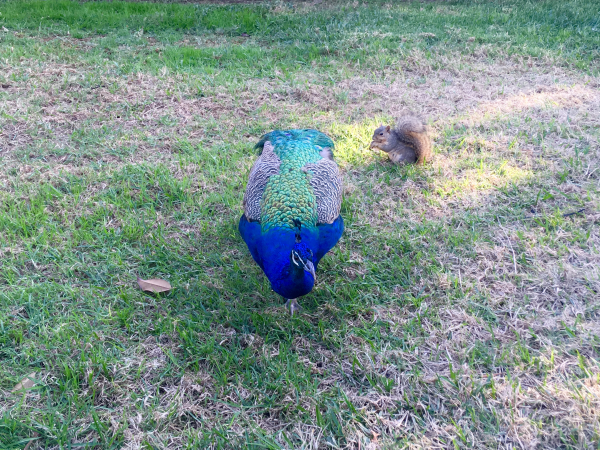
Hollywood Forever.
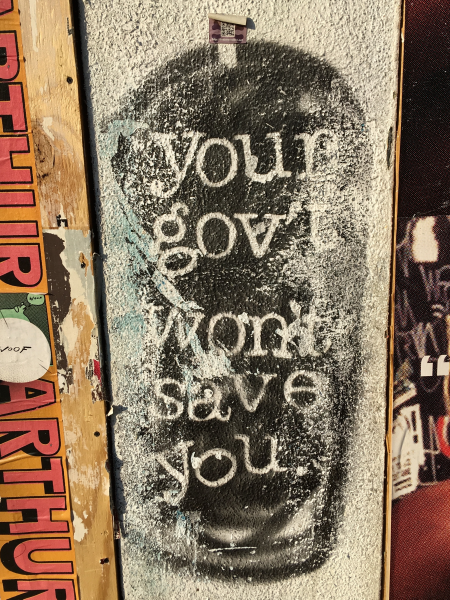
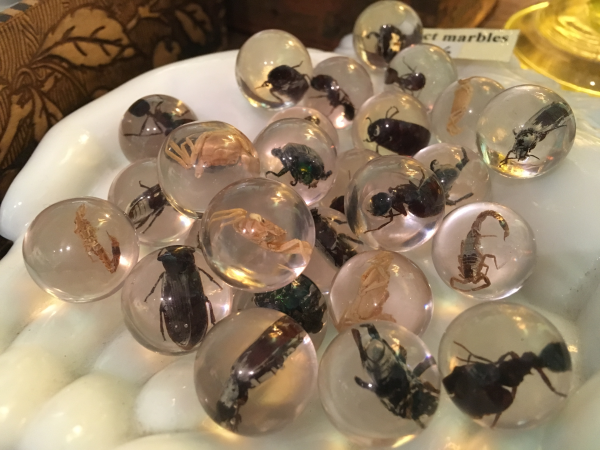
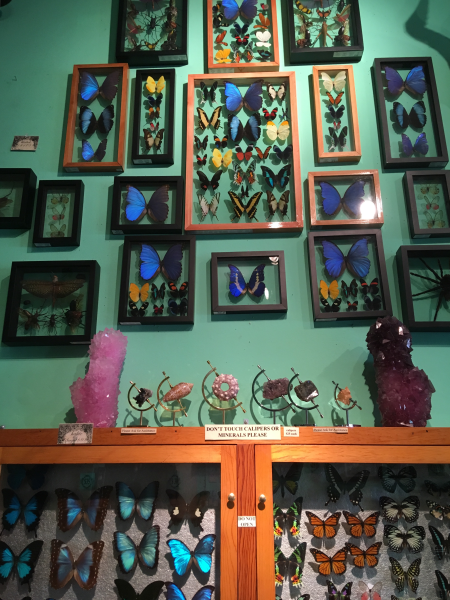
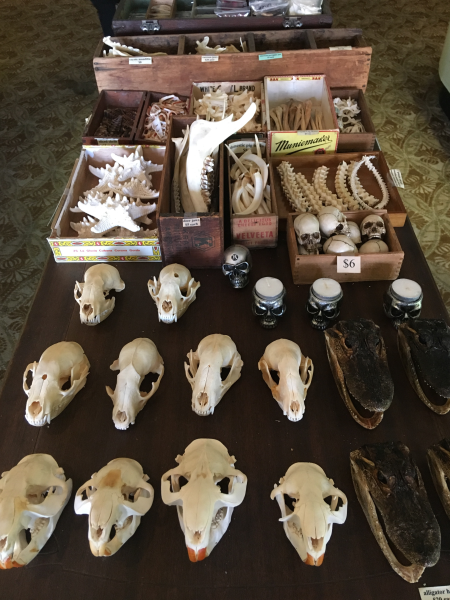
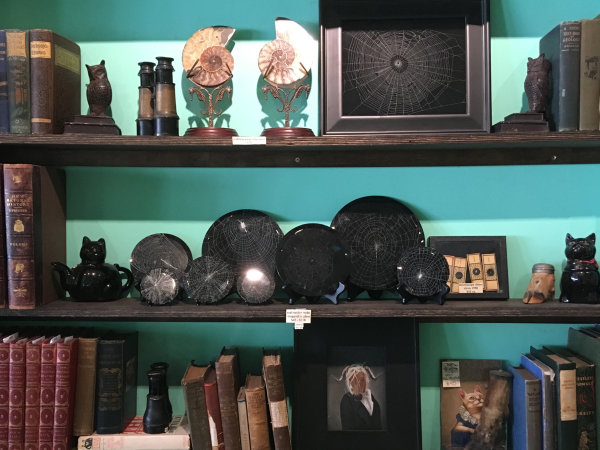
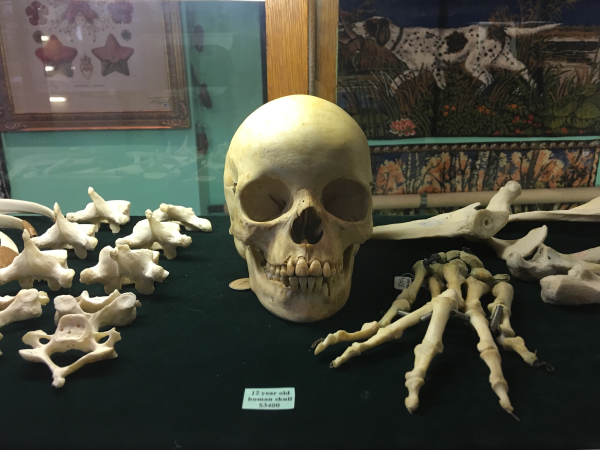
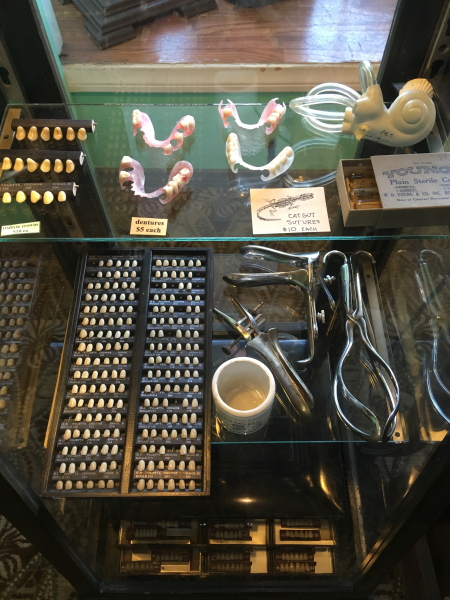
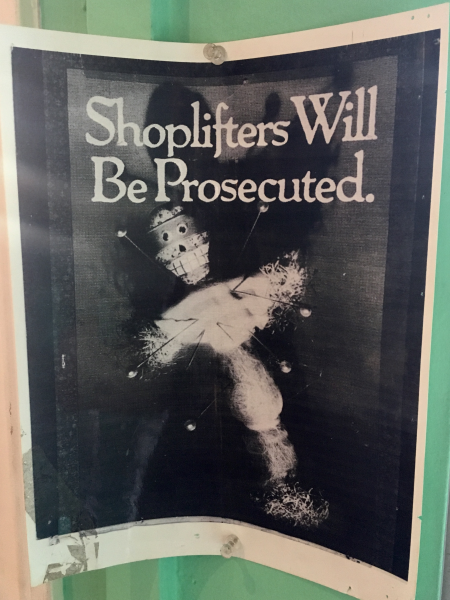
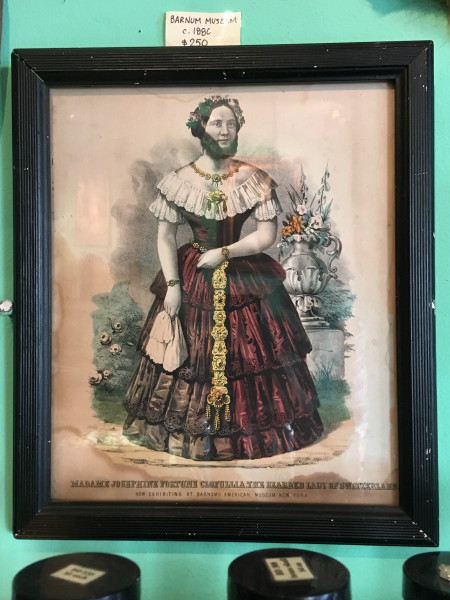
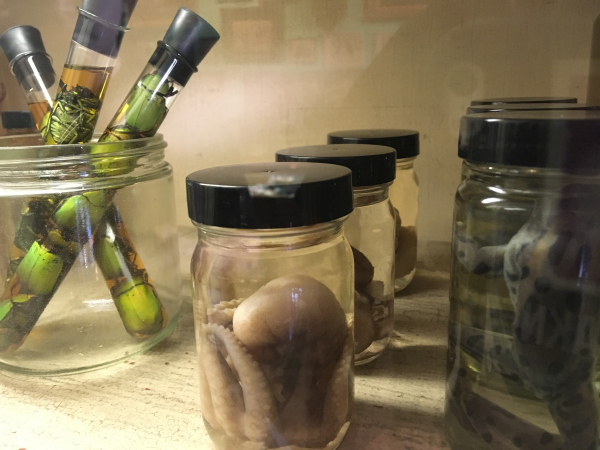
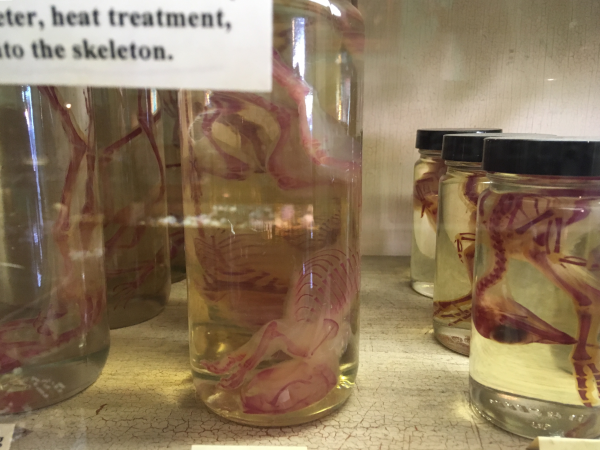
Necromance.
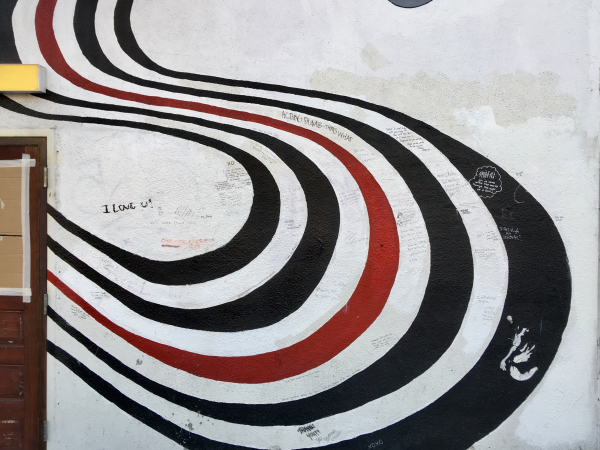
RIP, Elliot Smith.
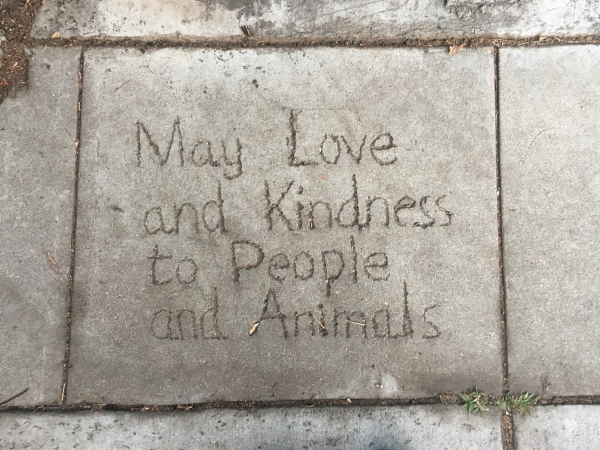

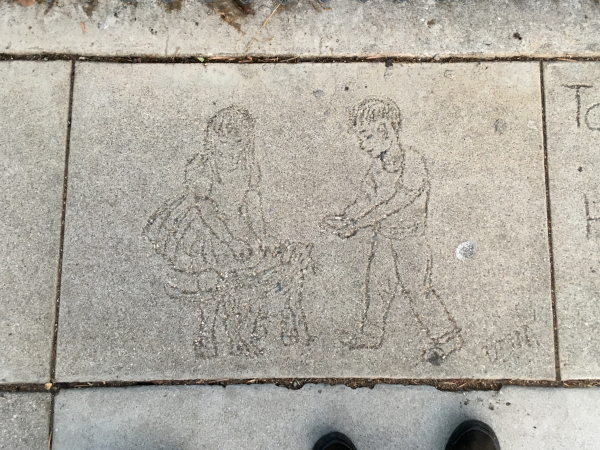
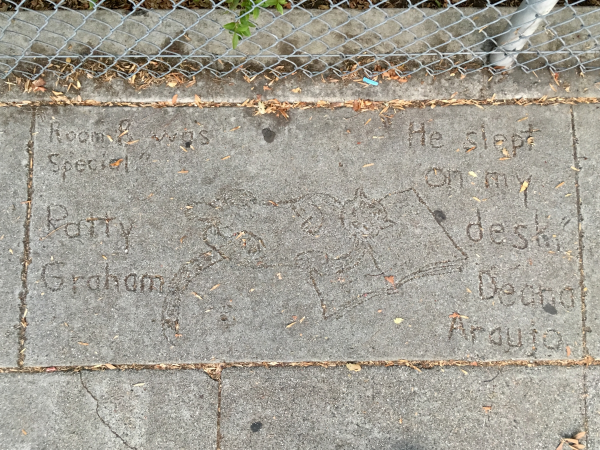
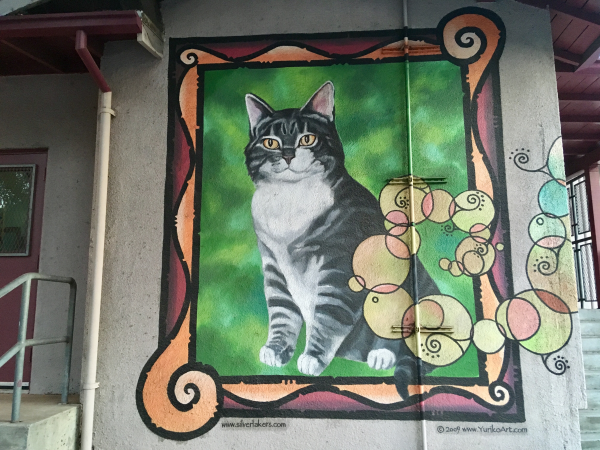
RIP, Room 8.
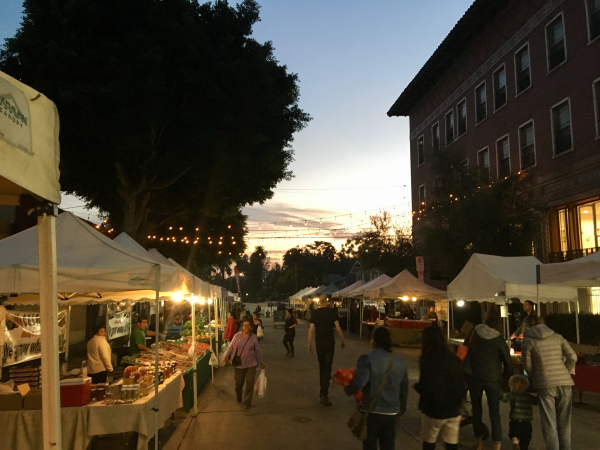
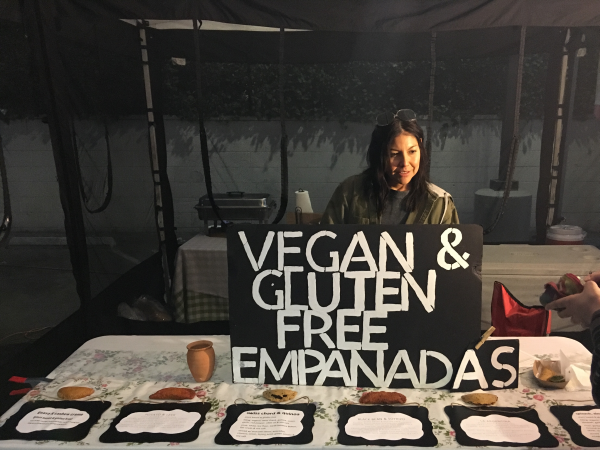

A charming farmers market, with vegan empanadas.
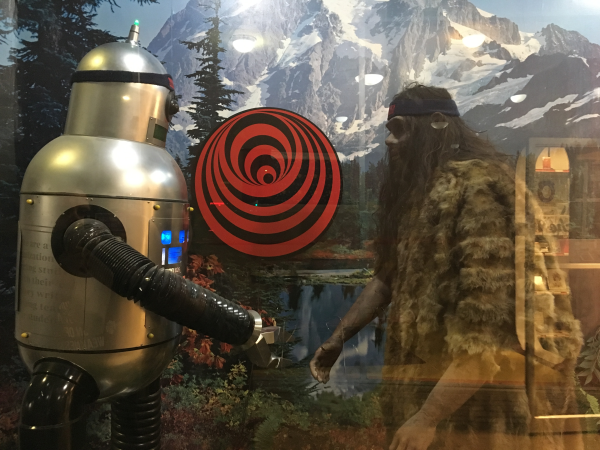
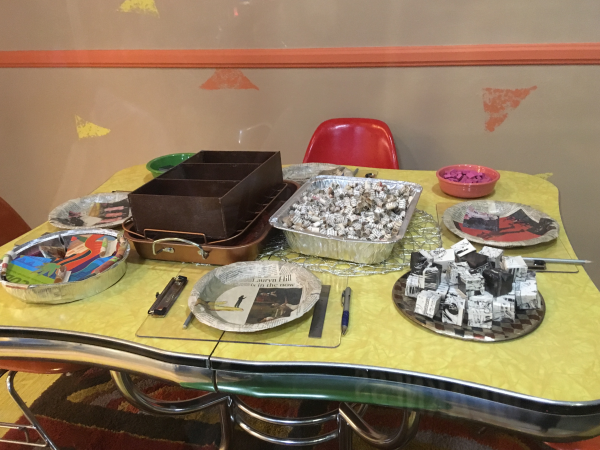
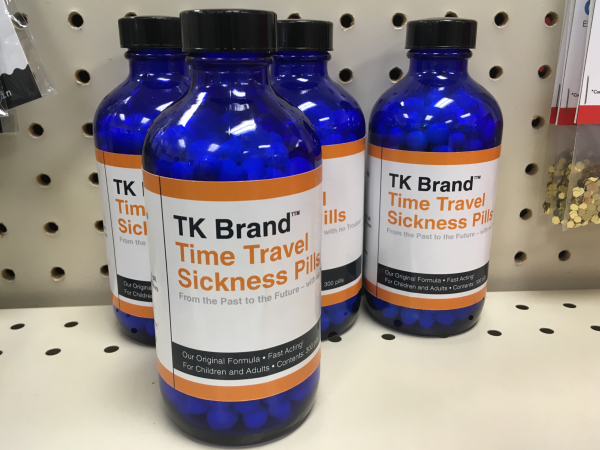
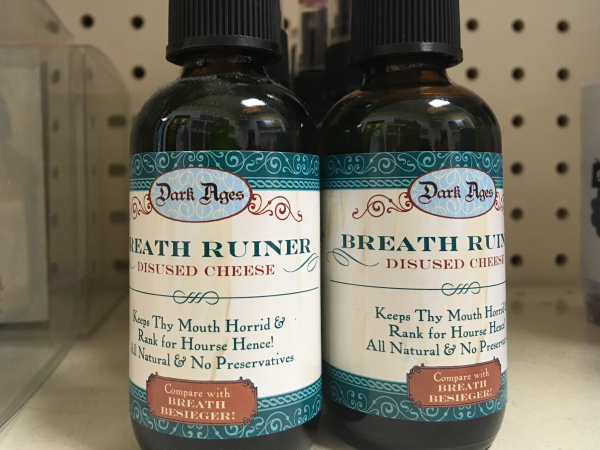
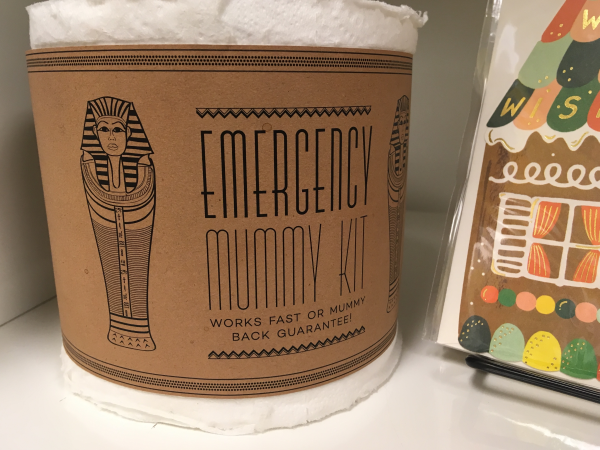
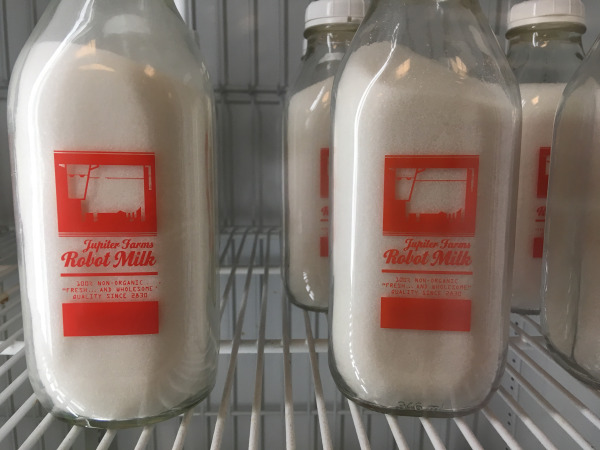
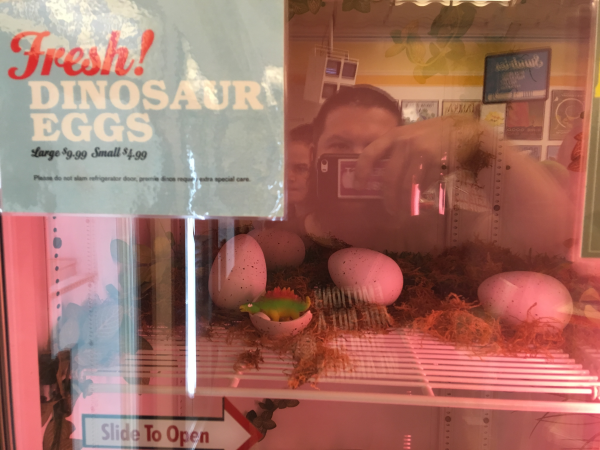
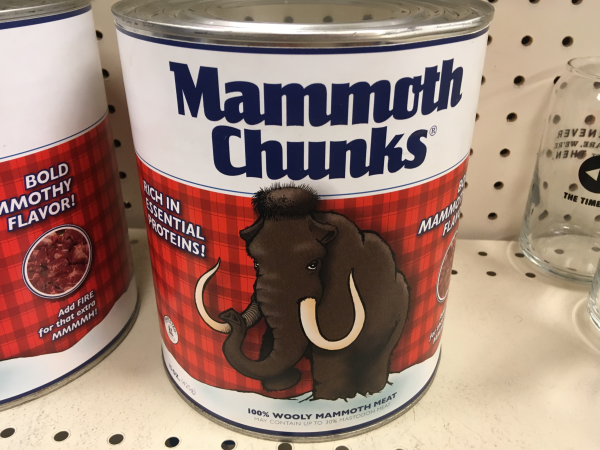
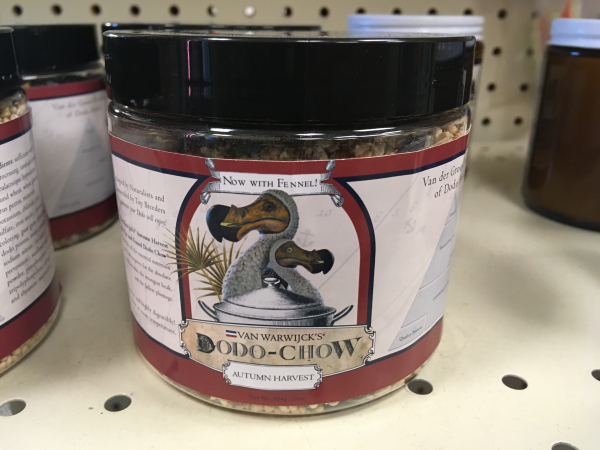
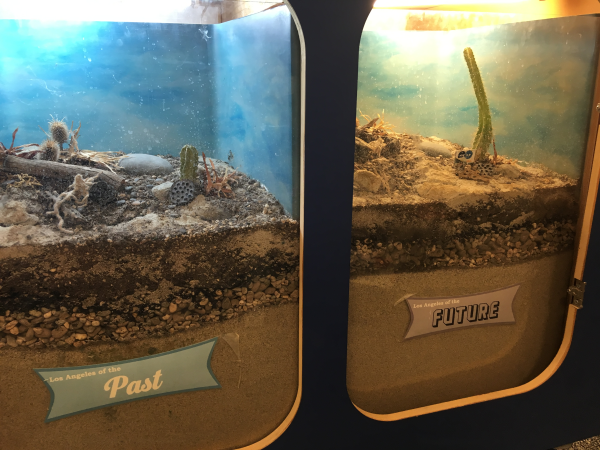
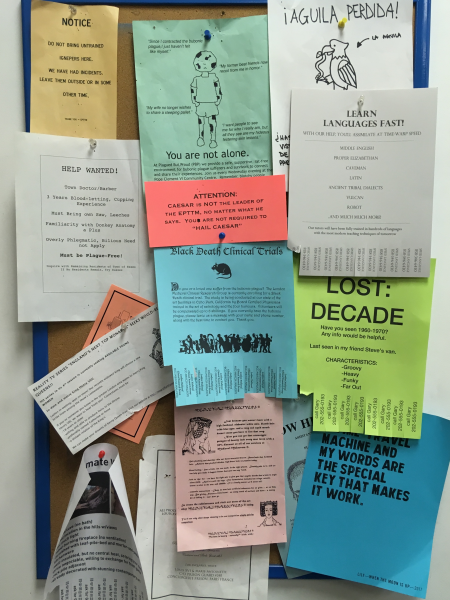
The Time Traveler Mart.

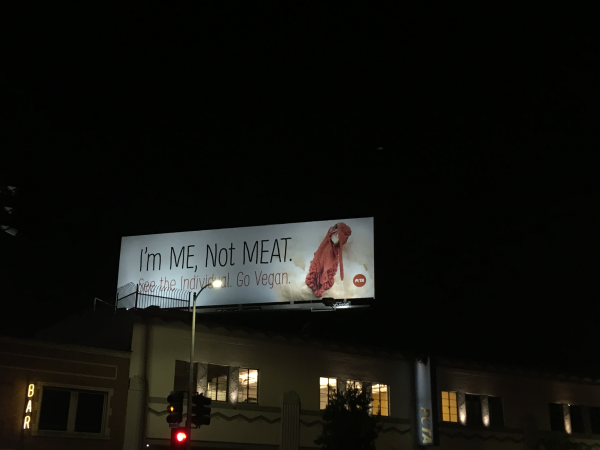
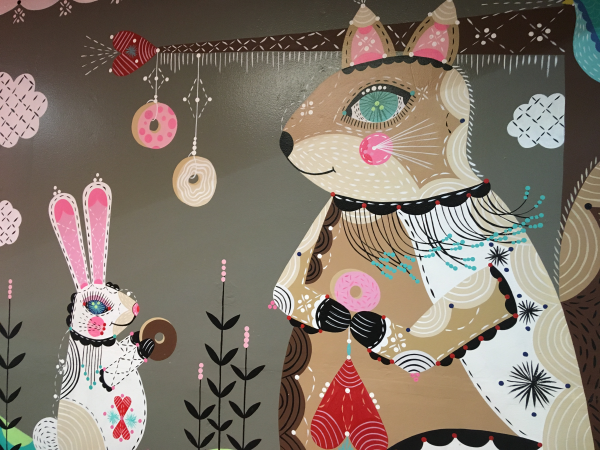
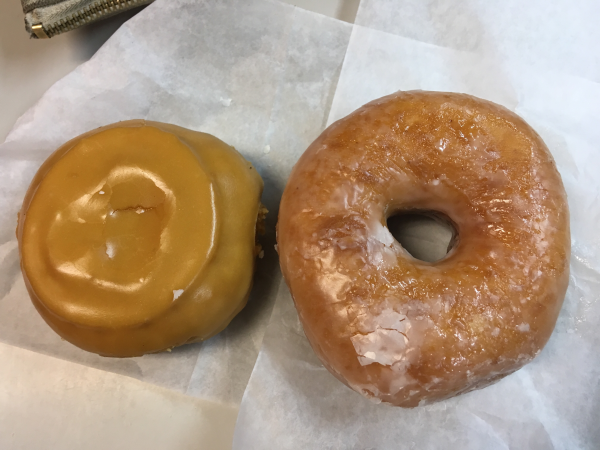
Donut Farm!
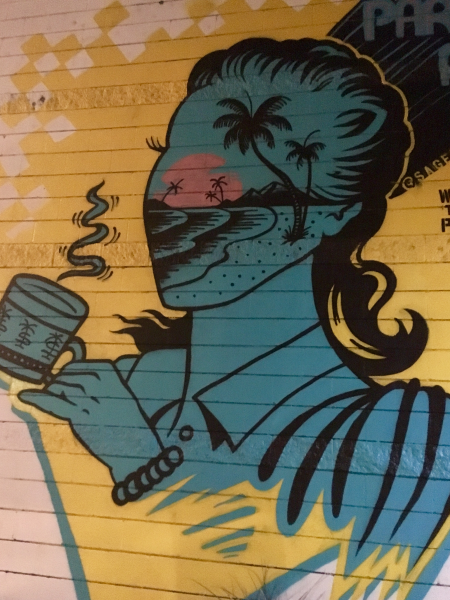
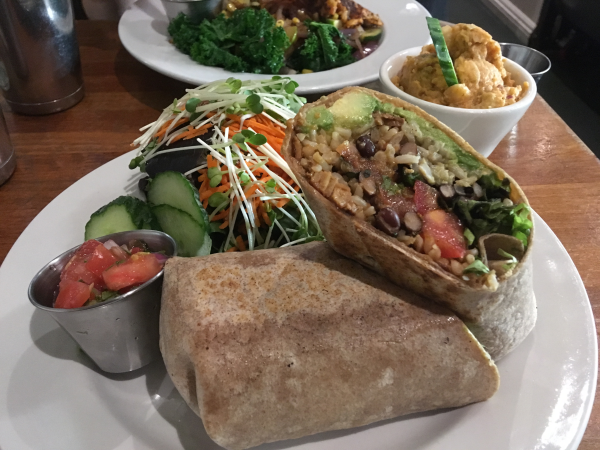
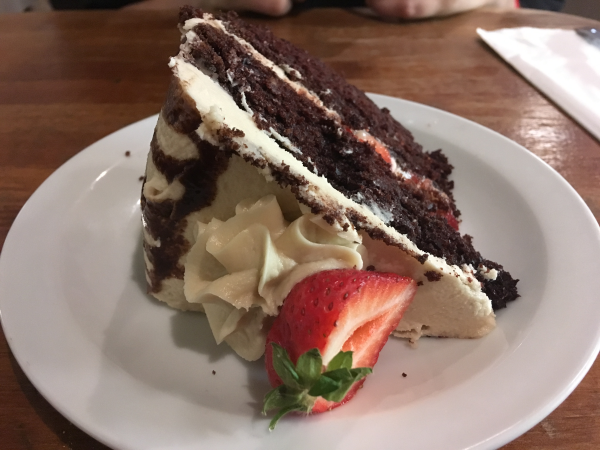
Flore!
DAY EIGHTY-TWO
Saturday, November 17th
Out in West Hollywood, there was a modest "Pornstar Walk of Fame" that lasted barely the length of the front to Studs, a gay porno theater. These authentic sidewalk prints and autographs included famous names like Linda Lovelace, Harry Reems, Marilyn Chambers, and John Holmes, out of eight inductions from the '70s and '80s, which was known as the "golden era" of porn. Studs itself was actually pretty historical, too. The building was once one of the many "Pussycat Theaters" that opened across California as a small chain of porno theaters named after a Woody Allen film. This particular location was the last of its kind by 2001, and survived its inevitable fate solely because of legendary b-movie filmmaker Roger Corman, though it was obviously a lot different in its current form. Across the street was a sex shop called The Pleasure Chest that we spent a little while at, browsing for toys for Alyssa but ultimately leaving empty-handed due to how expensive sex toys were.
Not far from there, there was a controversial non-profit organization with the lofty and misleading name "the Citizens Commission on Human Rights", which was founded in 1969 by the Church of Scientology and a secular psychiatrist named Thomas Szasz whose career had focused on criticizing modern psychiatry and the DSM. I'd read that they had their very own museum in West Hollywood with the dramatic title, "Psychiatry: An Industry of Death". Entry was free, so we had to see what it was all about. They offered convenient parking in their own back lot, and everyone in the front lobby were very friendly and welcoming, but probably in a predatory way. We were told photography of any kind wasn't allowed and that I could only take a picture of the entrance to their museum if someone was in it.
While suspected to be an obvious front group for Scientology and their agenda against psychiatry and the pharmaceutical industry (because you should instead rely on and give your money to them, of course), there was plenty of truth to what they said throughout the exhibits regarding the historical origins of psychiatry, its direct ties to Nazi Germany and eugenics, the ways the field was used to oppress and disappear members and groups of society, the torture the mentally ill faced as guinea pigs and prisoners of early asylums, and the profit motive behind psychiatric medicine and the almost indiscriminate way they were prescribed. If they got one thing absolutely right, it was that psychology wasn't a real science, there was no physical evidence of mental illness as of yet, and the field does not have any cures. Each section was very intricate, with long and dramatic videos to sit and watch amongst many placards and some authentic artifacts from the history of psychiatry. The production value of everything was astounding, of course, because they had that Scientology money. We watched every single one and read everything we could. We were hooked. They had honestly made a compelling case, and we agreed with a lot of their assessment. That being said, they missed the mark in blaming the field as a whole, rather than analyzing how capitalism tainted everything. We wound up being there for several hours until the sun was down and they were closing. The woman at the front desk excitedly gave us a bunch literature and DVDs.
For dinner that night, we ate at an all-vegan falafel joint called Fala Bar that boasted "NO FAKE SHIT EVER" in neon light in their window. We had to get their falafel plate, some sweet potato fries, pita and hummus, and the brussel sprout salad to throw on top of everything else. We ate at their little outdoor tables while a very specific kind of annoying young people practically proprietary to Los Angeles pranced by, looking like they were made in a reality TV factory.

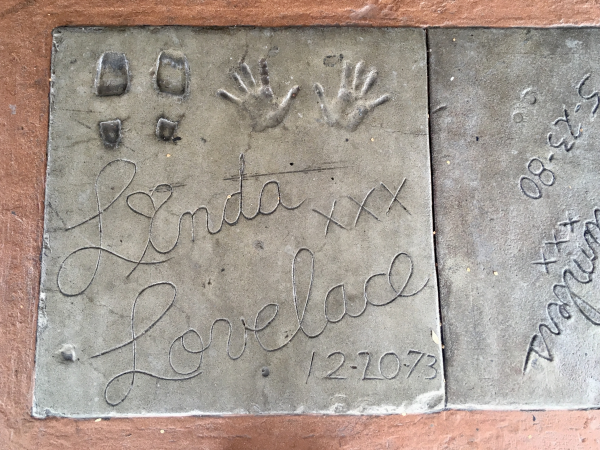
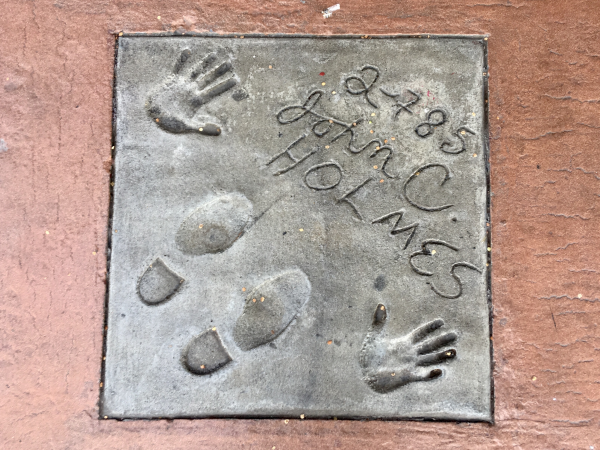
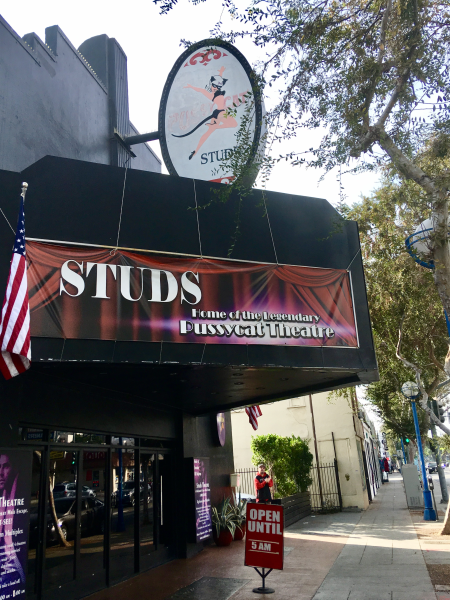
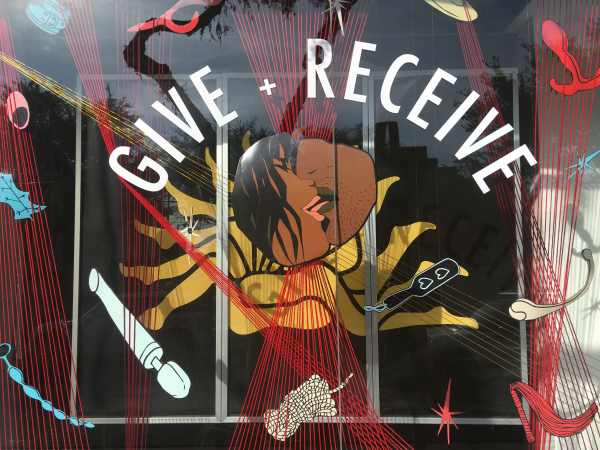

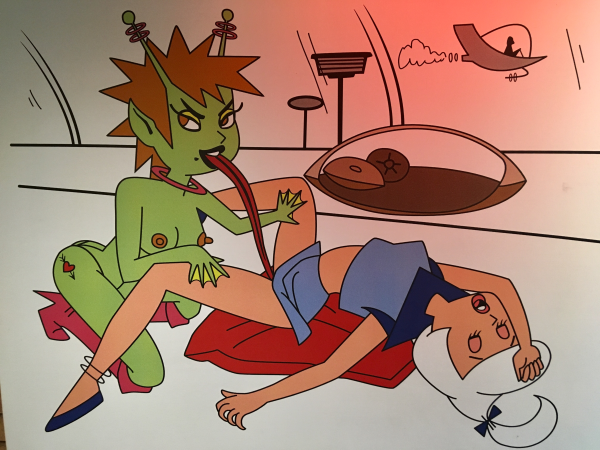
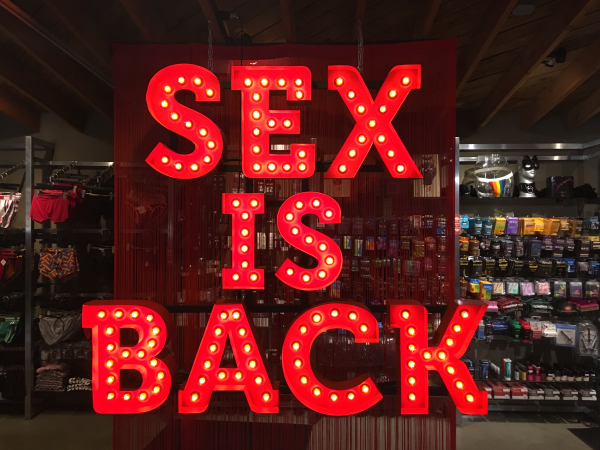
So much commercial sex.
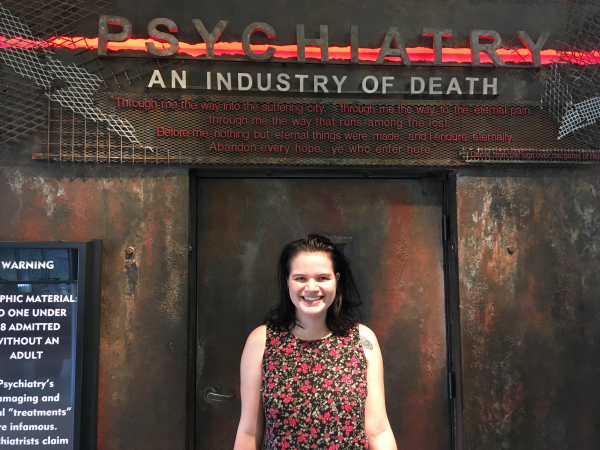
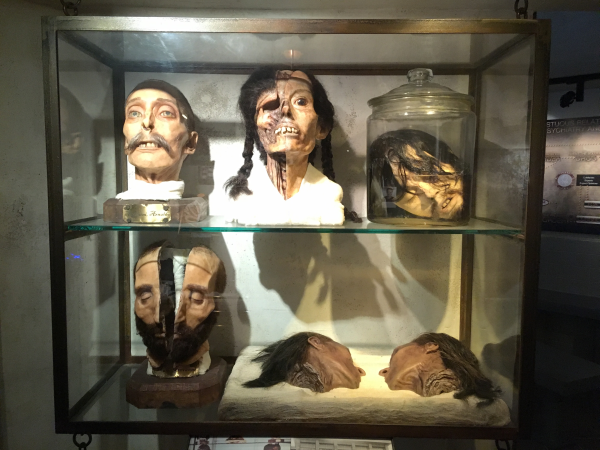
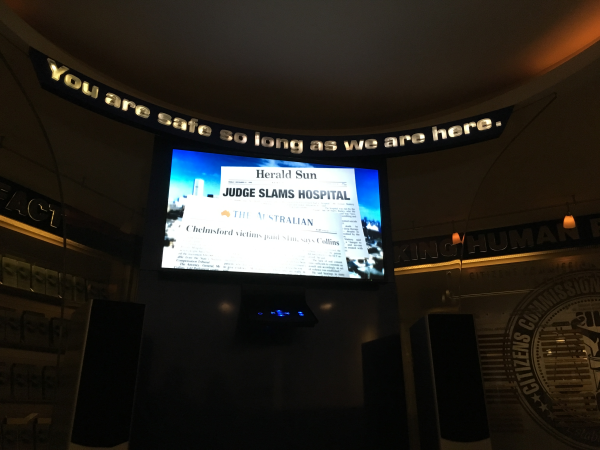
The anti-psychology Scientology museum.
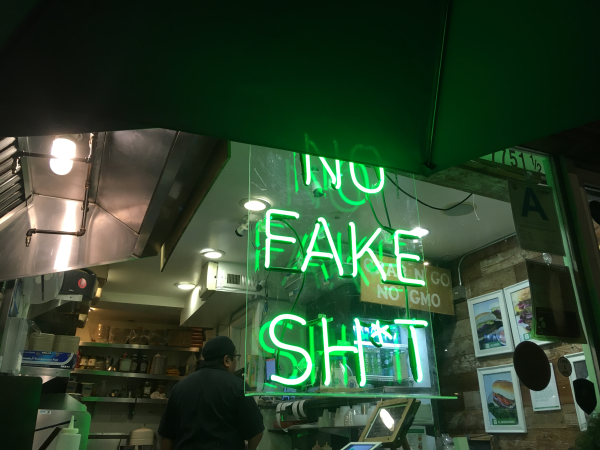
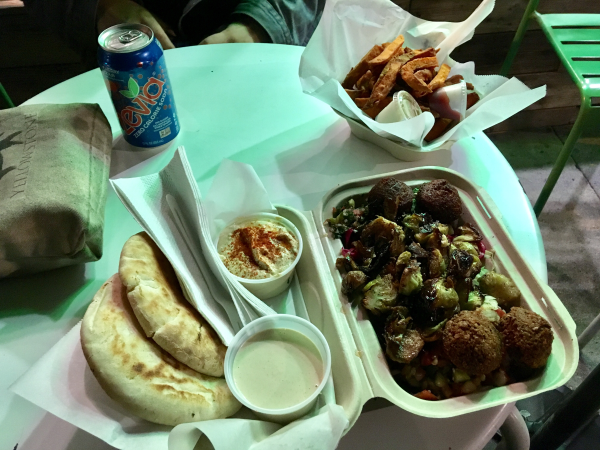
Fala Bar!

Wednesday, November 14th
Our first day in Los Angeles, excitedly for up and began rushing around as much as we could. We knew the time difference and the arbitrary daylight savings bullshit would affect how long our days were, and that traffic in Los Angeles, whether we set the GPS to avoid highways or not, would ensure everything was at least a half hour away from each other no matter how geographically close they actually were. First, we had to get gas, and found the cheapest station we could in a city where it varied between no cheaper than $3.50 and as expensive as $4.50. Thankfully, we had that $37 and then some left over from that nice Jesus couple from the last gas station.
Our first stop was a half-mile long mural locally known as "The Great Wall", though actually titled more simply, "The History of California". Designed by Judith Baca, it was her first mural, and over 400 youths and artists, some of whom were from a justice juvenile program, helped finish it over the course of six summers starting in 1978. It spanned six city blocks at 2,754 feet by the Valley College campus, on the walls of the Tajunga Wash drainage route, and was one of the longest murals in the world. When we got there, we found street parking and began at its ending, leaving us to walk along it and watch history in rewind. The drainage route was mostly dry, with trash like a mattress and a shopping cart sitting in it. The mural, thanks to upkeep, was pristine. As with other murals we'd visited, it presented a brutally honest portrayal of how most states in America began, through the eyes of the people destroyed in California's path, deliberately focusing on the marginalized people whose backs it was built on. It started with pre-history and dinosaurs, entered the lives of indigenous people, their folklore, and their eradication by colonialism, jumping into the 20th century and its wars, bigotry, and civil rights fights that took place throughout, before the introduction of the suburbs and World War II, and ending in the 1950s with McCarthyism. There was no way to speak of history honestly or accurately without acknowledging how much destruction, hatred, and dead bodies it was all built on. And ya know what? When all was said and done, none of it was worth founding this country, period. It was an impressive logistical feat in its own right, but the mural's unflinching attention to historical detail and creative way of depicting suffering through literal and metaphorical scenes was incredibly scathing and beautiful. We both loved it.
Afterwards, we sought out to do the three-mile hike up to the Hollywood letters and back. At first, we had trouble figuring out how the fuck to get to the trailhead. Google Maps took us to a dead-end road where a gate advertised paid horseback tours up to it. After some digging, we found out about the three public trails we could choose from. We decided on the one rated "G", but were just as confused when we got to it. The drive was up the most narrow and winding roads we'd ever seen anywhere, taking sharp turn after sharp turn by extravagant houses surrounded by angry No Parking signs. A security vehicle was sitting right where the trailhead was supposed to be, and he told us we could just walk right through the door, even though it had a keycode thing on the handle. He said parking was down the road. It was all simpler than it looked. The sun shone blindingly and beat down hard whenever we weren't protected by the shade of the cliff faces towering over us. It was a nice stroll, more level than not, and the steady incline was manageable, though I'd definitely say it became more of a "PG" rating after a while. As we got higher up, we were provided several incredible views of the city. When we got to the top, we were honestly surprised and a tad disappointed by the tall fence that separated us from actually being behind the giant letters--neither of us knew it would be like that, though we probably shouldn't have been surprised at all. It definitely gave us more appreciation for the douchebag who changed the letters to say "HollyWEED" years before. Then we turned around and walked back.
Our next stop was the Bronson Caves, which were easy to access from the little park beneath them. A former quarry left behind by a company that excavated rock for city street construction in the 1920s, they were now a heavily used filming location, particularly for independent and low-budget films. Most famously used for external shots of the Batcave from the original '60s Batman series, they'd also been used in countless sci-fi and horror films, including Invasion of the Body Snatchers, Army of Darkness, and many episodes of the various Star Trek series. When we got there, its popularity and heavy usage was evident: A couple and their two huskies were taking corny photos outside of the entrance, while we stood there annoyed but patiently waiting for them to get out of the way; a small group of metalheads were talking about being on molly while standing high up on some rocks in front of the distant Hollywood letters, doing a photo shoot for what appeared to be their band promo; the inside was blocked off as it was being used by a small, low-budget production of some sort. When we went around to the back, we saw a labyrinth and a crew of people hanging around.
When I asked them what was being shot there, they said, "A short film," and then quickly added, "Crazy Rich Asians 2," while laughing.
They were all Asian, and at first I wasn't entirely sure if they were even joking or not. It was a hilarious joke, though.
We continued riding around and through the many upper-class neighborhoods hidden along noodly roads in the Hollywood Hills. This stop, it was to see The Ennis House, which sat atop and overshadowed them. It was a dramatic and strange piece of architecture, unsurprisingly designed by Frank Lloyd Wright as his largest textile block work, based off of Mayan temples. It was currently owned by a billionaire investor named Ronald Burkle, but was a famous filming location, as well. Made famous by its use in the original House On Haunted Hill, it was also used in Blade Runner and played the mansion where Angel, Spike, and Drusilla live in Buffy the Vampire Slayer. Its neighbors apparently were very angry about it being a constant location for tourist visits and film crews.
As the sun began to set, we had to figure out what left on the list we could realistically see. It appeared we may as well start heading toward the Griffith Observatory. On the way, we had to go through the Mount Hollywood Tunnel, a short and otherwise forgettable tunnel that was only notable for being used as the entrance to Toontown in Who Framed Roger Rabbit. I'd been to LA numerous times, but had never gotten a chance to visit the observatory because I never had a car of my own. It was exciting to finally go there. At an elevation of 1,135 feet, the view of the city as the sun set was magical enough to make the stop worth it. It was packed with tourists crowding along every railing available, all vying for the opportunity to stand and behold the sunset for themselves--and, of course, take a bunch of stupid pictures of themselves in front of it. Alyssa got sucked into taking a few for two women along the way, and we both relished in watching one beautiful young couple repeatedly take the same picture together with a tripod, alternating simultaneously from their fake smiles for social media to the dead and uninterested mope they both naturally had around each other. We ran around and looked over railings at the city skyline from just about every angle, and peeked inside one of the domes where one of their huge telescopes was unfortunately off-limits to the public until 7PM later that night, long after we'd be gone.
Griffith Park was "a Christmas present" to Los Angeles, and the people in general, from Griffith J. Griffith, who made his fortune in a mining syndicate and subsequently donated the more than 3,000 acres of land. In his will, he left more funds to build the Griffith Observatory. Based on his belief that astronomy and science should be freely accessible to all people, it was mandated by his will that it remain free for all attendees, which it had been since its opening in 1935. After serving two years in prison for attempting to shoot his wife to death, he also donated funds to build the Greek Theater. Inside, a beautiful mural on the ceiling of the rotunda was right above their Foucault pendulum. We walked around and saw a thermal imaging of ourselves, various exhibits pertaining to early telescopes and astronomy, a small collection of real meteorites found locally, a screen that demonstrated in animation what a hit from a comet would look like based on customizable variables, and a long corridor animating the timeline of our universe's history with nearly 2,200 pieces of celestial jewelry collected over the course of 25 years and donated by a board member named Karen. Our visit concluded with one of their scheduled demonstrations of a real Tesla coil, which conducted electricity and powered a neon light sign without the use of any wires or anything--just the electricity in the air. He died in obscurity, despite all of his genius ideas and contributions to modern technology, and his wireless electricity plans were allegedly too difficult to implement, though I suspected it to be another example of suppression of technology by capitalism.
For dinner that night, we got one of my favorite pizzas in America at one of the most obnoxiously boastful vegan places I'd ever stepped foot in: Cruzer's! We decided on the Meat Pizza topped in ham, pepperoni, and sausage, and got a side of cheese bread sticks. On our way to a cafe to loiter, we stumbled on a place called Van Leeuwen serving reasonably priced, artisan vegan ice cream with several interesting flavors. I got a scoop each of the two most exciting ones: the "Planet Earth"--which was blue with spirulina and green with matcha green tea cake--and the "Honeycomb", which genuinely did not contain any honey. I topped them with their house-made chocolate sauce, whipped cream, and peanuts. I hated the chocolate sauce, but the scoops were absolutely perfect.
We went to a place hilariously named the Bourgeois Pig. Open late with ample seating and outlets, as well as strong WiFi and tea, it was absolutely perfect, with a dimly lit bar-like atmosphere without all the alcohol and sloppy drunks. Afterwards, we headed to a 24-hour Von's grocery store to camp for the night. This would become our routine every night while in Los Angeles after getting dinner and everything that wasn't a bar closed up: loiter at Bourgeois Pig, then go sleep at the Von's.

















The Great Wall of Los Angeles.






The big letters.




Bronson Caves.


The only pictures I could get of the Ennis House without blocking traffic and pissing off all the uppity assholes who live in the hills.

Onward to Toontown!






















The sunset over LA from, and the inside of, the Griffith Observatory. So cool.



Cruzer's pizza and Van Leeuwen's ice cream!

DAY EIGHTY
Thursday, November 15th
On one residential block in the Silver Lake neighborhood, there was the Chandelier Tree, a big, hundred-year-old camphor tree stood next to a quaint little home with a slight lean, adorned with 34 actual chandeliers from its many branches. Started with only three chandeliers salvaged from a movie set by the home owner, an airbrush makeup artist named Adam Tenenbaum, it was gradually expanded over the past eight years, illuminated every night by an intricate wiring system he rigged up himself. Monthly electric costs for just his tree got up to $200 a month, partly financed by the donations made at the '70s parking meter bedazzled in 17 lightbulbs, which took both coin and card. Sadly, we didn't get to experience its light show, being the early afternoon and all, but it had apparently been shut down by the city just a few weeks before we got there, anyway. After almost a decade, a cranky neighbor contacted the city, who then conveniently noticed not only some code violations, but that the tree was partly rooted on their property, giving them jurisdiction over at least the areas suspended over the corner public right-of-way that it cast shade over. They now suddenly feigned concern for the safety of pedestrians, and only insurance purchased by Adam could help that. Adam begged, pleaded, and succumbed to their demands, jumping through every hoop they presented, desperately trying to not become another quirky Angeleno yard project stamped out by the city that owed much of its personality and culture to these attractions. In the end, it seemed he failed, and the plug was pulled on it all--the city had literally made this small spark of light fade to darkness. Not far up the street was a giant, creepily detailed eye ball.
Another cool spot back in the vast Griffith Park were the ruins of the old LA Zoo, where a cute park had been set up around its abandoned cages and fake caves. Opened in 1912 on what was once Griffith J. Griffith's ostrich farm, the zoo started out with 15 animal inmates, some of which were donated by a film studio. Despite being a relative financial success, it was open for free, and soon became unaffordable while the quality of animal care severely declined. It was finally abandoned in 1966 so the city could build a newer, bigger one, which had been open since, eventually developing the old one into another facet of the greater park as a picnic area and hiking trail. We walked by the immediate picnic tables, which sat on the old bear grottoes, cheaply mimicked rock caves where polar and brown bears were once imprisoned for entertainment. We went inside all of them. Small stairways leading up to second floor rooms were locked shut by barred doors that looked no different from prison bars. Continuing along them were more enclosures that were completely fenced over, some likely previous cells for smaller animals. We walked up the trail that wrapped around them and got the view from above the grottoes, before stumbling on another enclosure where big cats were likely kept. It was sad that it only closed to make way for an even larger one, but still satisfying to see the ruins of a closed zoo. We kept hiking up the mountain trail where the dirt became dustier, waiting to find the monkey cages, but eventually gave up and turned around.
It was time to head back into the city.
Though I'd already been to both Museum of Death locations, I hadn't been to the one in LA in many years, and Alyssa had never been there at all. We wound up spending the rest of our remaining daylight hours very slowly and carefully combing over every placard, lengthy biography, and artifact in the place. Founded in 1995, it all started with the artwork and letters received by the two founders from the convicted serial killers they corresponded with as a hobby. Inside, there was a room of artwork by and of serial killers, including several pieces by John Wayne Gacy; a room about execution, detailing its history and exhibiting several antique pieces, including the bloodstained shirt of a botched electric chair killing and the mummified decapitated head of French serial killer Henri "Bluebird of Gambais" Landru; rooms filled with contemporary to modern pieces from the funerary industry, with a TV playing an old instructional video on embalming being demonstrated with a real corpse; halls of real crime scene photos; a room dedicated to Hollywood murders, particularly the Black Dahlia and Charles Manson; a room full of original Heaven's Gate cult memorabilia next to a detailed mock-up of the iconic bodies under bunk bed sheets with their Nike sneakers sticking out, using the actual beds the suicide victims were found lying on; rooms packed with skulls, shrunken heads, and taxidermy animals; and a theater playing more autopsy videos. The founders said they wanted the museum to, "make people happy to be alive." An appreciation for life and its vulnerable finitude had always been a huge reason why death and gore always interested me. Pictures were not allowed in the museum, and I respected it.
By the time we got out of the museum, it was nighttime and everything else we wanted to do was closed. That meant it was time for dinner. Now, Los Angeles was full of these vegan Thai places, and even vegan places that weren't exclusively billed as Thai that still served mostly Thai food. Green Leaves was one of those places, and had one of the biggest, cheapest, most eclectic menus we'd ever seen. It was a challenge to choose what to get for dinner, so we got a bunch of stuff that in no way complemented each other. I got pancakes with fried chicken, the Melody stir fry with tofu, and fried fish and chips! Everything was incredible, and I didn't have to feel like I burned a ton of money afterwards.
On our way to Bourgeois Pig, we decided to go to a late night show at the Upright Citizens Brigade Theater called "We're Gross with Gilli Nissim", which was described as a talk show that shamelessly discussed gross things. I always loved going to a random show at a UCB Theater whenever I was in Los Angeles or New York City; plus, it was cheap and would give us something to do after dark for a change. So we gave it a try. Alyssa was preemptively pessimistic about the quality of comedy we were about to see just because of her general idea of what most improv was like, which was fair. When the host came out with her pants down and her underwear pulled as tightly up her vagina as possible while acting like she didn't notice for the first 15 minutes, we feared it was about to be some try-hard Amy Schumer shock humor bullshit, but the bulk of the show was actually really funny, albeit more thanks to the co-stars they brought on stage than anyone else. The host was especially annoying. At one point, they decided to smoke a joint on stage and, "get high while brainstorming a bit, live," which was an incredibly corny act of conventional rebellion I thought reserved for teenagers, but also made me very genuinely uncomfortable, especially after the joint was then shared and passed from person to person across the entire room, forcing me to have to decline a joint being passed to me. I cannot describe the panic that overwhelmed my entire body as everyone began smoking weed and cracking open complimentary beers. The smoke and smell hurt my head and I felt like everywhere was a shitty house party that I could never, and would never, escape. The presumptive attitude that everyone partook in intoxication culture was offensive in and of itself, but I should have been able to enjoy a comedy show without having a joint handed to me!
Afterwards, we found what we thought was a $100 bill underneath our seat. Whenever I'd see money on the ground, my reflex was always to grab it first in whatever way I could. So I immediately put my foot over it before quickly placing it in my pocket. It wasn't completely unbelievable that someone in that audience would just drop a hundred dollars. It felt and looked real. We wouldn't realize it said "For motion picture use only" on it until we were about to use it on gas a few days later.






The Chandelier Tree (RIP), and the giant eye ball.


















The Old LA Zoo.




What pictures I was allowed to take at Museum of Death.



Green Leaves!

DAY EIGHTY-ONE
Friday, November 16th
The next day, we tracked down some famous houses from horror movies that I grew up on and that Alyssa had never seen before. Los Angeles was full of them, but it would have taken all day to see more than these few houses. The first two were conveniently across the street from each other and were both used in the first Halloween film by John Carpenter: the Wallace house and the Doyle house, both homes stalked by Michael Myers before a series of murders, including the attempted murder of Laurie Strode, played by Jamie Lee Curtis. The third was Nancy Thompson's house in Nightmare On Elm Street by Wes Craven, easily my all-time favorite horror franchise. Like in the movie, the address number was 1428, though it wasn't an Elm Street. The door was red then, but the house was otherwise unchanged. It was a nice stroll around blocks of rich homes, in the name of my childhood and the presence and impact of horror movies throughout it.
We went to the Hollywood Forever cemetery, where a ton of Hollywood legends were buried. At first, all we saw were a lot of field corners sloppily congested with black gravestones engraved with the strongly Hebrew, Polish, Russian, and Asian names of unfamous people on them. When we were approached by a friendly squirrel, we sat down on a curb and became distracted by feeding them dumpstered sunflower seeds for a while. We walked around and hunted down a handful of graves we wanted to see. We saw the grave of Mel Blanc, the voice of virtually every original Loony Toon, and arguably my and many others' childhoods. We saw Judy Garland's new mausoleum inside the pavilion named after her. We absolutely could not find the grave of Gidget Gein, one of the founding members of Marilyn Manson. We stumbled on the elaborate and expensive grave of a man named Pete T. Stanley, whose site included a detailed stone piano. Despite such a spectacular memorial, we couldn't find any information whatsoever about the man online. We saw an angel's balls. We hunted down the modest indoor grave of Art Pepper, a musician and saxophonist Alyssa respected. We then again became distracted, this time by feeding a peacock some of the sunflower seeds, who was later joined by our squirrel friend. By the pond, we saw a cenotaph for The Wizard of Oz's Toto, though he wasn't actually buried there, nor was actually named Toto (his name was Terry), nor was even a male dog, and not far from him the tragic bronze statue and grave of the late-great Anton Yelchin. Neither of us were at all interested in monuments to any Ramones or the classic actors from the past.
Necromance was another oddities shop full of beautifully morbid artifacts and an atypically equal balance between human and non-human animal pieces. There were naturally plenty of washed bones of dead animals and the pinned bodies of preserved insects, but unlike many other shops we felt relied too heavily on taxidermy and animal corpses, this place was also full of authentic human parts. We asked the overtly goth woman working how their animal parts were acquired and got told they were all allegedly scavenged naturally, while other things were secondhand antiques. They also had preserved spiderwebs, antique medical and surgical tools, vintage zoological prints, rocks and minerals, and jewelry. As always, we purchased nothing. The sale of dead animal parts would never sit well with me, though certain conditions did seem like ethical grey areas. Thankfully, we could browse those sorts of places as if they were free museums. This was one of the more tasteful curio shops we'd visited.
We of course had to stop by the Elliot Smith "Figure 8" wall. I wasn't sure when the last coat of paint was added to maintain it, but the colors were a little muted. There were only a few tags on it honoring his memory, though. A Filipino bar opened up on one half of it, so only one side remained of the full mural. Room 8 was a stray cat who waltzed into a classroom at Elysian Heights Elementary back in 1952. He instantly became a fixture of the school, living there during the class season and disappearing during summer vacation. When a new school year would begin, he'd be back there right on the first day. He was named after his favorite classroom. In time, he became famous, and news cameras would be there waiting for his arrival at the start of each school year. The school would receive a hundred letters a day addressed to him, and his fame led to being profiled in numerous national magazines, a documentary, and a children's book. In his older years, he got hurt in a cat fight and was taken in by a nearby family. He still visited the school, but would be returned across the street to his second forever home by the janitor, every day until he died at the age of 21 in the comfort of an animal hospital. His long obituary ran in papers ranging from local all the way to the east coast, and he was buried at a local pet cemetery with a grave stone funded by money raised by the students. Now his memory surrounded the school, and his paw prints were even eternally imprinted in one of the many inscribed sidewalk panels around it, which included stories and drawings by past classrooms of their memories of him. A beautiful mural could also be seen behind the gate. More proof that non-human animals made this world a more magical place.
As the sun set and we walked along Sunset Boulevard, we stumbled on a farmers market taking up a whole block in Echo Park. We walked around and enjoyed the nightlife. It was such an event for the community in a way I had never experienced back at home. We got some homemade vegan empanadas from a nice lady that were absolutely delicious. We stopped at an odd little place called the Time Travel Mart, which boasted its specialization in materials for time travelers. The place was one big clever joke brought to life, selling absurdly ephemeral gag goods like time travel sickness pills, powdered robot milk, dinosaur eggs, canned mammoth chunks, and absurdities. I couldn't figure out what any of their items actually were, because they were made to look so authentic. Even their community bulletin board was covered in ads that went along with the joke. All their proceeds went to a local non-profit called 826LA, which supported students age 6-18 along with their teachers, trying to create enriching environments that inspired and encouraged kids to be creative and to get into writing.
Since Thanksgiving was coming up, the billboard on top of the PETA LA offices was very vegan. We stopped at Donut Farm for doughnuts. They were pretty okay. We had dinner at a vegan spot called Flore. I got their signature burrito, which was stuffed with brown basmati rice, black beans, tempeh bacon, cilantro cream cashew cheese, avocado, lettuce, and tomato. We got a strawberry chocolate cake for dessert. Every restaurant in LA was so goddamn expensive.



Horror houses, then and now.

Alyssa made fun of me and said, "Look, this is graffiti you would like," because it was cheesy and emotional. She was right.

















Hollywood Forever.











Necromance.

RIP, Elliot Smith.





RIP, Room 8.



A charming farmers market, with vegan empanadas.











The Time Traveler Mart.




Donut Farm!



Flore!
DAY EIGHTY-TWO
Saturday, November 17th
Out in West Hollywood, there was a modest "Pornstar Walk of Fame" that lasted barely the length of the front to Studs, a gay porno theater. These authentic sidewalk prints and autographs included famous names like Linda Lovelace, Harry Reems, Marilyn Chambers, and John Holmes, out of eight inductions from the '70s and '80s, which was known as the "golden era" of porn. Studs itself was actually pretty historical, too. The building was once one of the many "Pussycat Theaters" that opened across California as a small chain of porno theaters named after a Woody Allen film. This particular location was the last of its kind by 2001, and survived its inevitable fate solely because of legendary b-movie filmmaker Roger Corman, though it was obviously a lot different in its current form. Across the street was a sex shop called The Pleasure Chest that we spent a little while at, browsing for toys for Alyssa but ultimately leaving empty-handed due to how expensive sex toys were.
Not far from there, there was a controversial non-profit organization with the lofty and misleading name "the Citizens Commission on Human Rights", which was founded in 1969 by the Church of Scientology and a secular psychiatrist named Thomas Szasz whose career had focused on criticizing modern psychiatry and the DSM. I'd read that they had their very own museum in West Hollywood with the dramatic title, "Psychiatry: An Industry of Death". Entry was free, so we had to see what it was all about. They offered convenient parking in their own back lot, and everyone in the front lobby were very friendly and welcoming, but probably in a predatory way. We were told photography of any kind wasn't allowed and that I could only take a picture of the entrance to their museum if someone was in it.
While suspected to be an obvious front group for Scientology and their agenda against psychiatry and the pharmaceutical industry (because you should instead rely on and give your money to them, of course), there was plenty of truth to what they said throughout the exhibits regarding the historical origins of psychiatry, its direct ties to Nazi Germany and eugenics, the ways the field was used to oppress and disappear members and groups of society, the torture the mentally ill faced as guinea pigs and prisoners of early asylums, and the profit motive behind psychiatric medicine and the almost indiscriminate way they were prescribed. If they got one thing absolutely right, it was that psychology wasn't a real science, there was no physical evidence of mental illness as of yet, and the field does not have any cures. Each section was very intricate, with long and dramatic videos to sit and watch amongst many placards and some authentic artifacts from the history of psychiatry. The production value of everything was astounding, of course, because they had that Scientology money. We watched every single one and read everything we could. We were hooked. They had honestly made a compelling case, and we agreed with a lot of their assessment. That being said, they missed the mark in blaming the field as a whole, rather than analyzing how capitalism tainted everything. We wound up being there for several hours until the sun was down and they were closing. The woman at the front desk excitedly gave us a bunch literature and DVDs.
For dinner that night, we ate at an all-vegan falafel joint called Fala Bar that boasted "NO FAKE SHIT EVER" in neon light in their window. We had to get their falafel plate, some sweet potato fries, pita and hummus, and the brussel sprout salad to throw on top of everything else. We ate at their little outdoor tables while a very specific kind of annoying young people practically proprietary to Los Angeles pranced by, looking like they were made in a reality TV factory.








So much commercial sex.



The anti-psychology Scientology museum.


Fala Bar!